You are using an out of date browser. It may not display this or other websites correctly.
You should upgrade or use an alternative browser.
You should upgrade or use an alternative browser.
Luxury & Precision W4 & W4-Ex Flagship Portable USB DAC/AMPs
- Added by lycos
- Create date
-
- Tags
- luxury precision w4
Bosk
1000+ Head-Fier
Pros: Superb sound
Volume wheel
Fantastic build quality
Volume wheel
Fantastic build quality
Cons: Expensive
No Line Out
No Line Out
Luxury & Precision W4 Review

Luxury & Precision is a rather esoteric audio brand famous for R2R digital audio players with sublimely natural sound signatures & stratospheric price tags.
The W4 is the successor to L&P’s W2 dongle, and its’ USD $449 price attracts almost as much attention as the W4’s unique appearance that’s reminiscent of the Astell & Kern SR35 I recently reviewed.
This Luxury & Precision W4 was generously loaned to me for this review by Head-Fi poster grumpy123, and I’m extremely keen to see if it can live up to its’ steep asking price.
Packaging

The USD $449 Luxury & Precision W4 comes bundled with a user manual, warranty card, USB-C to USB-C cable, USB-C to Lightning cable & USB-A to USB-C adapter.
There’s also a leather case you can purchase separately.
Features & Ergonomics
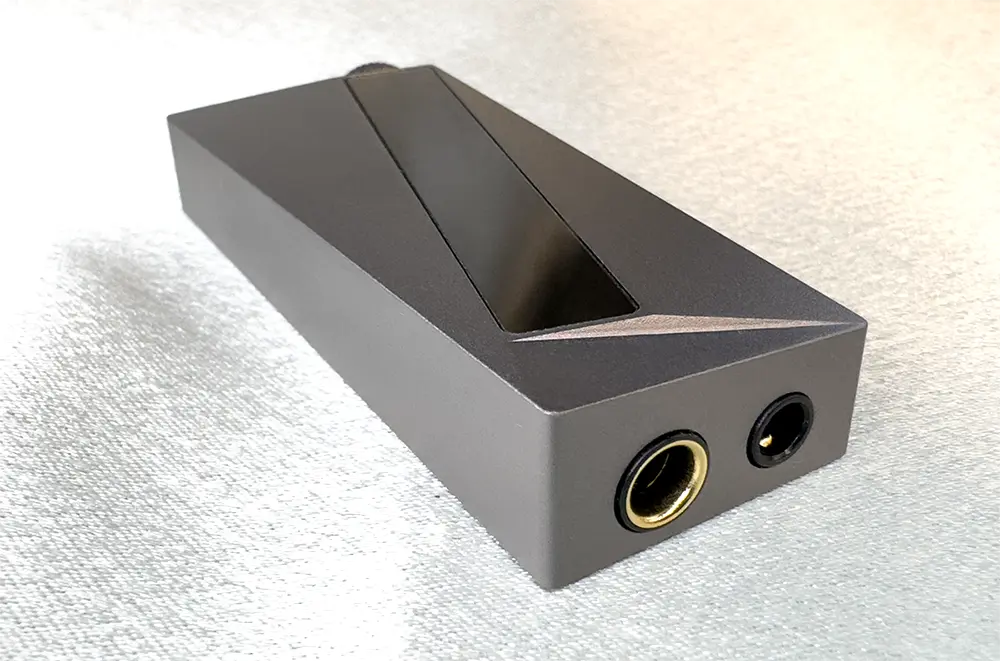
Powered by an LP5108 chip developed by Luxury & Precision themselves, the W4 features a hefty 420mW of output from its’ 4.4mm jack. Boasting two gain modes, 5 digital filters and 9 hardware EQ modes, it also features a SPDIF Line Out that functions from its’ 3.5mm jack only. PCM files up to 384kHz & DSD up to DSD256 are supported.
At 23.4 grams the W4 feels extremely light & made for genuine portable use, yet its’ machined aluminium case is extremely smooth & luxurious to the touch. It’s the only dongle I’ve tried that features a volume wheel, which feels lovely to turn with decisive tactile clicks reminiscent of Astell & Kern players.
The slanted screen shows you the current volume level & sample rate, and is decently readable despite being quite small.
Sound Performance
I tested the W4 with a USB-C iPhone 15 Pro & M1 Macbook Air, using Noble Audio Spartacus IEMs.The W4 paints a fairly neutral picture with an emphasis on maximising technical performance. There’s a slightly warm tonality to avoid the impression of being cold or clinical, but W4 is extremely clear & transparent with a sound that balances musicality with accuracy, leaning slightly towards the former.
Bass is tight and deep, with slightly enhanced quantity without drifting too far from neutrality.
The W4 midrange is satisfyingly rich & full but does not dominate the presentation, nor are vocals thrust forward excessively but instead the listener is positioned several rows back from the stage.
Treble is perhaps the best I’ve heard from any dongle, with articulation & detail approaching that of mid-level DAPs. However quantity is firmly kept in check if you’re treble sensitive, and if anything has been tastefully softened to avoid fatigue.
Most impressive are the W4’s technical capabilities which are the best of any dongle to date. Resolution is genuinely impressive and on par with many DAPs, the soundstage is not only broad but deeper than that of most dongles, and imaging is very precise. Dynamics & note weight are also excellent.
Dongle Comparisons

iFi Go Bar 10th Anniversary (USD $499)
The 10th Anniversary has a significantly higher noise floor which is evident during quiet passages of music, and its’ sound signature is much warmer and more bass driven whereas the W4 sounds cleaner and more neutral.
However the 10th Anniversary is also darker, with a smoother presentation that emphasises technical performance less so the soundstage isn’t as deep nor is resolution as high, but there is a little more body to the performance at the expense of neutrality.
Cayin RU7 (USD $289)
RU7 sports a more midrange-centric tonality that’s a bit smoother & more organic than W4 but does not mute the treble quite as much as the 10th Anniversary does.
RU7 also goes closest to W4’s technical capabilities though its’ soundstage is still slightly less deep with resolution being a touch diminished as well. I do prefer RU7’s more musical tonality to W4’s which sounds more ‘hi-fi’ by comparison, though W4 has slightly more impressive bass texture but can sound a bit more clinical when A/Bed with the RU7.
Penon Tail (USD $74)
The Tail is tuned with greater lower midrange prominence and more forward vocals, and more midbass emphasis to deliver a more fun, groovy sound.
The price difference between these two dongles is reflected in their performance gap however, with the W4 making the Tail feel a touch unrefined, lacking the same precision & cleanliness with treble in particular feels more simplified, resolution being lower and the soundstage lacking the same depth.
Conclusion

Given the Go Bar 10th Anniversary’s limited availability, the Luxury & Precision W4 is the most expensive dongle most enthusiasts will consider purchasing so it’s under pressure to deliver the goods – but it certainly does!
W4 is clearly the most capable dongle we’ve seen at enhancing IEM technical performance. Its’ ability to project a deep, three-dimensional soundstage in particular is reminiscent of high end DAPs, and of all dongles W4 comes closest to bridging the sonic gap between them, though some distance remains.
Of course no product is perfect and the W4’s high price counts against it, as does its’ tonality which is more neutral & “hi-fi” sounding than many other dongles, so I can imagine some users preferring the Cayin RU7’s more analogue timbre instead.
The W4 has raised the dongle bar & thrown down the gauntlet to other manufacturers, and made me even more eager to sample new Luxury & Precision products in future. Where dongles go from here in the coming years will be exciting to witness.
DestinoAzell
New Head-Fier
Luxury & Precision W4 [LP5108]
The Smooth Operator….

[MY PERSONAL HEAD-FI GRADING]
1 ★ - Appalling! please avoid this!
2 ★★ Subpar offering, there are better options out there!
3 ★★★ Decent with some caveats! Not a bad pick!
4 ★★★★ Not perfect but solid choice ! This should be in your shortlist. A nice addition to your collection.
5 ★★★★★ One the best in class! You should go right ahead & buy one! A must have!
SOUND IMPRESSIONS & USER EXPERIENCE:
[SOUND QUALITY 8/10 VALUE: 4/10] [Warmish-Neutral]
- The overall tonality is warmish-neutral. It sounds very clean, cohesive yet well very articulated. Being effortless & musical is in fact W4's maxim. Being analytical or engaging is definitely not its greatest forte but dynamically, it is no slouch.
- The low-end is noticeably sub-bass oriented with believable mid to upper bass presence. It's more rumbly than punchy. The attack is impactful but not hard hitting. The decay & extension is precise with thick & hefty note-weight. It manages to capture the essence of reverb/echo very well. The bass control is nothing short of competent with great consistency across all genres.
- The mid-range is neither intimate nor recessed. It has good level of warmth and body coming from lower harmonics. The note-weight on vocals and instrument never seem to be lacking. It does sacrifice a tad of clarity for euphony. Thus, some of the vocal texture and instrument attack are smoothed out. Having said that, the naturalness of vocal transient remains top-notch, it's got none of that edginess, sharpness or metallic sheen regardless of pairing.
- The treble performance is pristine. It not overly bright or too dark. it's got great extension with adequate air presence. The treble refinement is one the best in class. There has not been a single grain, haze, distortion or any sort degrading qualities. It's very clean, clear and smooth. There is no unnecessary emphasis, peaks or dips on lower to mid treble region at all. Any instrument or synthetic noise in this region have accurate presence and timbre. This allows it to pair with anything without any hassle. The only downside is, the treble could use a bit more bite on it's transient. Other than that, it is pretty much flawless in what it's trying to achieve.
- The head-stage is one of the widest I've heard with believable height and depth. Space and dimension never seem to be lacking.
- Great imaging, layering & separation prowess.
- Good level of micro-detail & dynamics from lows to highs, just slightly behind the best.
- Natural tone and timbre but not the most realistic in the game.
- Not as harsh on low-fi. Quite forgiving.
- Premium build and design with digital panel.
- Provides great amplification for a portable dongle DAC/AMP.
- Efficient power draw and heat management.
- Independent volume control with memory plus a useable little knob.
- Extra functionality: multiple selection of mode/filters/gain available.
How does it compares vs the cheaper, simpler, smaller Tanchjim SPACE.?

Vs TANCHJIM SPACE [Dual-CS43131]
[SOUND QUALITY 8/10 VALUE: 8/10] [NEUTRAL-BRIGHT]
Bass:
- The W4 will sound warmer, thicker and more forward in the mix which makes your music sounds denser on replay. The SPACE however does not follow that rule. It will come across more mid-bass oriented. The mid-bass kick, slam and thump hits deeper and harder. And the texture of rumble and tremor is noticeably sharper. The slower decay and denser note weight of W4 bassline can't really hold the candle to the SPACE slightly superior bass detailing. The only aspect the SPACE is lacking is definitely on note-weight department.
Mid-range/Vocals:
- Versus the W4, the SPACE is more mid-centric in its presentation. The mid-range elements will sound more forward within the tri-frequency. The level of transparency and clarity is definitely a step up. The vocals and instrument sounds crispier on it's transient with adequate note weight and body. Having said that, for people who prefer lusher and fuller-bodied mid-range might still prefer the approach of W4. As for the downside, other slacking abit on vocal detailing, female vocal can come across a tad too thick on the W4. Whereas on SPACE, vocals and instrument can sound a tad too loud in the mix due to that slight bump on the pinna-gain region. And it is noticeably less forgiving on artifacts such as sibilance, grains, grit, glitch and those imperfections.
Treble:
- The SPACE will come across significantly brighter with further extension. It sounds clearer, airier and more sparkling up top versus the W4. To my ears it is not overly bright nor it is fatiguing at least with the gears I've tried. It is very well executed in its approach. Instrument like hi-hats, cymbal-strike or even drum hit-extension are more pronounce with accurate decay. Electronics or synthetic noise are far more engaging and addicting to listen on SPACE which is a big plus in modern day music.
= Technical Performance =
Stage/Layering/Separation/Imaging :
- The W4 head-stage is slightly wider, noticeably more headroom and a hair more depth. The separation on both is very consistent. But the W4 offers more gap between instruments. And the vocals were given more space to shine. The imaging prowess is sharper and more accurate on the W4. The extra depth dimension gives the W4 slightly better sense of layering on the stage and not to mention the darker background. It's an easy win for the W4.
Detail & Resolve:
- When it comes to micro detail be it musical detail or artifacts, the SPACE just has the edge on retrieving those detail. Some of the detail on the W4 is smoothed out sadly hence why.
Tone and Timbre:
- In trade, the W4 provide the listeners with heftier note-weight and body to their music. It manages to retrieve elements of reverb and echo a tad better. It does sounds more organic than SPACE. I find it more pleasing to the ears regardless of pairings.
Price: Performance Value:
- No matter how you look at it, the SPACE is simply the best bank for buck here. Despite that high of a price-tag, the W4 didn't manage to eclipse the SPACE completely. It is a sad truth. Still, on W4 defense, the extra touch sound refinement of the W4 is something a lot of people would appreciate and it does offer some added functionality, premium build, plus that tiny swivel knob just oozes quality with satisfying clicking noise.
Synergy Factor:
- The SPACE however will definitely not work with most gears especially those bright, lean set. Meanwhile, the W4 should be able to pair well with all walks of tuning.
Power & Heat Efficiently:
- Both of them are pretty powerful and seemingly efficient on power draw. I didn't notice an abrupt power loss on battery level when using 4.4 BAL Output/High-Gain. Speaking of heat, the W4 handle its heat way better the SPACE could ever managed. The SPACE metal shell can get pretty hot upon using it.
FINAL THOUGHTS:
There is a lot of to like about the W4. And there isn’t much to hate about it either. Sadly, it is eye-wateringly expensive. Honestly, it quite overly priced and for the asking price, I was expecting better sound quality out of the W4, especially from a detail retrieval & dynamics standpoint. Given it's overall performance, I will be hard press to buy one with full price. Partly because something like the Tanchjim SPACE, IBASSO DC03/04 PRO exist. Having said that, among the pantheon of dongles I’ve tried, the W4 do stand out as being of the most refine sounding dongle there is. Most of the flaws are nit-picks and it does have some good qualities that makes it an appreciable device. I genuinely love the built and design. From every angle, it just looks so attractive and classy. One might even buy one just for the aesthetic alone and I could be one of them. Still, if you seek a tiny portable DAC/AMP that is smooth, cohesive, refine yet sounds natural with good technical chops, the L&P W4 might be the one you’re looking for. Well, that only if you have 450 dollars to spare. Otherwise, you'll be more than happy using those mentioned dongles above.
Foobar2000 [Laptop] [Ugreen USB C Adapter]
Huawei P20 PRO [Phone][ App- Foobar2000]
Tanchjim PRISM+
EPZ 530
Moondrop Blessing 2
7hz Timeless+
Hidizs MP145 BALANCED
1982 Chicago – Hard to say I'm sorry.
2003 NARUTO Original Soundtrack I – Wakiagaru Toushi
2008 K.will (케이윌) – 소원 (Great King Sejong OST Part.1)
2009 Maksim – Exodus
2010 Ichiban Ushiro no Daimaou (OST) – Kokoro no Oku De Ha
2014 Grabbitz – Here with you now.
2014 BoA – MASAYUME CHASING
2014 Hyolyn – 안녕 Good bye
2015 K MISSING KINGS (OST) - New Kings
2016 K RETURN OF KINGS (OST) - Return of Kings
2016 K RETURN OF KINGS (OST) - If you die.
2017 Namie Amuro – Hope
2019 K SEVEN STORIES (OST) - In Pursuit Of
2019 K SEVEN STORIES (OST) - Lost Small World
2019 Blade & Soul (OST) – Half-Moon Lake
2019 CAROLE & TUESDAY VOCAL COLLECTION Vol.1 – Light a Fire
2020 Paradox Live Opening Show (1st E.P) – BAE – BaNG!!!
2020 Paradox Live Opening Show (1st E.P) – cozmez – Where They At
2020 倖田來未 (Kumi Koda) – GET NAKED (Kiyoshi Sugo Remix)
2020 倖田來未 (Kumi Koda) – again (MATZ Remix)
2020 premiere fleurs – プリンシパル
2020 Love Live! Nijigasaki – 朝香果林 (Karin Asaka) – VIVID WORLD
2020 Fujii Kaze – へでもねーよ”/Hedemo Ne-YoSeishun Sick
2020 King Gnu – 三文小説 /Sanmon Shosetsu
2021 OWV – Fifth Season
2021 加藤 ミリヤ (Miliyah) feat. Yoshida Brothers – この夢が醒めるまで
2021 Official髭男dism – Cry Baby
2021 Chanmin BIJIN 美人 – Morning Mood
2021 門脇更紗 (Sarasa Kadowaki) – きれいだ
2021 Mirei Touyama – 美忘録
2021 SELECTION PROJECT Vol.1 – Only one yell -天沢灯ソロver.-
2022 Belle (Original Motion Picture Soundtrack) – Million Miles Away (ENG vers.)
2022 rei (E-girls) – Dark Hero.
2022 rei (E-girls) – IDNY
2022 I can fly (Special Edition) – Bleecker Chrome - You will shine
2022 I can fly (Special Edition) – YOSHIKI EZAKI x Bleecker Chrome - UP
2022 BEAST TAMER (OST) – じんわり感じている幸せ
2022 Ado – 会いたくて
2022 Ado – 踊
2023 La prière - Sweet Dreams
2023 Bungou Stray Dogs 4th Season ED – Luck Life – しるし
2023 Genjitsu no Yohane – Far far away
2023 Genjitsu no Yohane – Hey, dear my friends
2023 UMAMUSUME PRETTY DERBY - Hat on your Head!
2023 Anna – 花のように (Hana no You ni)
2023 riria. – 貴方の側に (Anata no Soba ni)
★ Main-Test-Tracks/ A glimpse of what listen to 90% of the of time.
Do take my words for what it’s worth. Afterall, I am just one man.
THANK YOU SO MUCH FOR READING! HAVE A GOOD DAY WHEREVER YOU ARE! TAKE CARE!
Disclaimer:
- This is a loaner unit from my generous friend @Andy EF a.k.a the founder of #donglemadness. Big thanks to him and please do support him on youtube
https://www.youtube.com/@donglemadness
If you like me to review your IEM/DAC/AMPS please hit me up:
https://www.facebook.com/DevaPainAkatsuki/
https://www.facebook.com/groups/670846031415174
Extra Photos


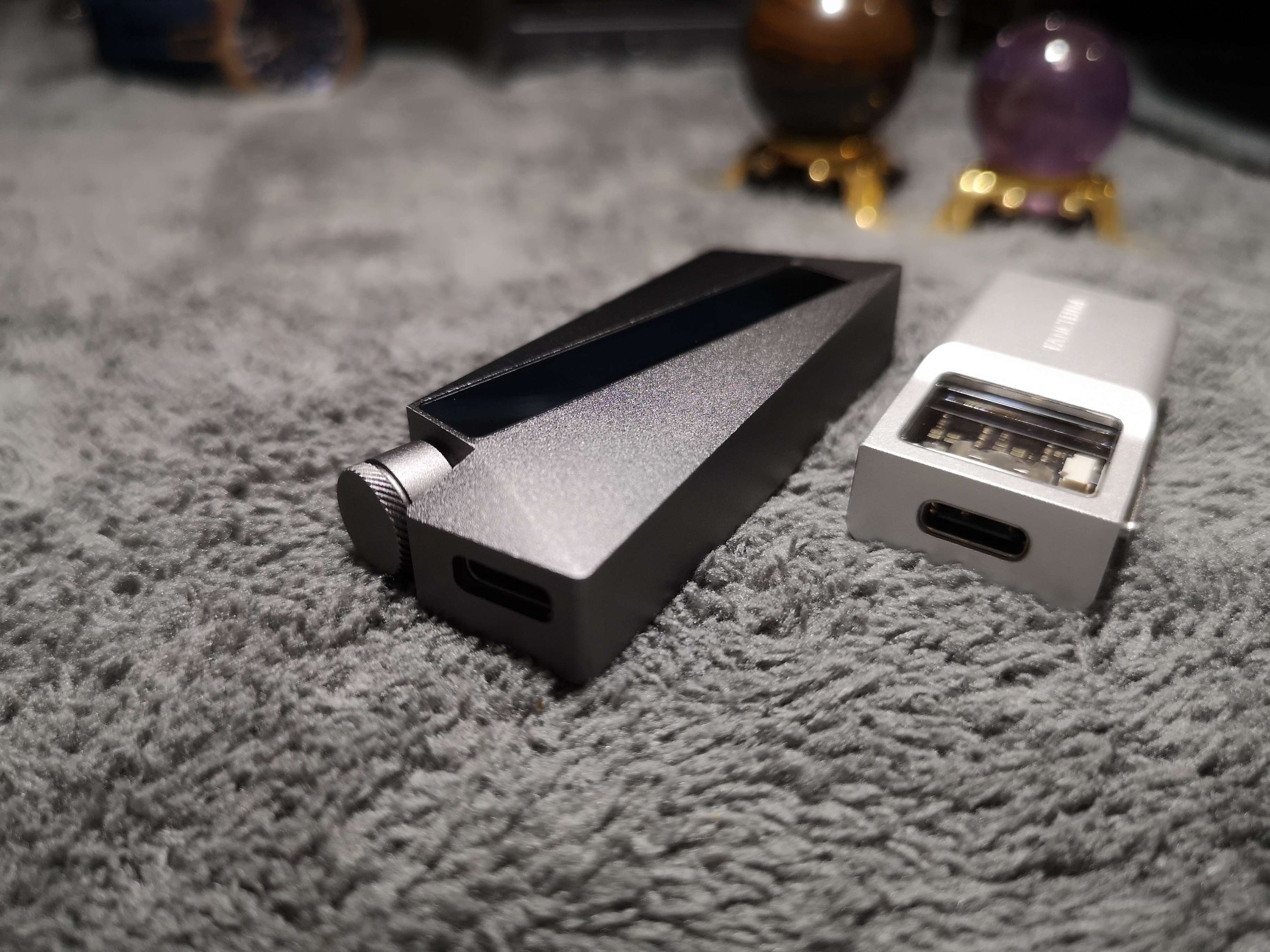

The Smooth Operator….

[MY PERSONAL HEAD-FI GRADING]
1 ★ - Appalling! please avoid this!
2 ★★ Subpar offering, there are better options out there!
3 ★★★ Decent with some caveats! Not a bad pick!
4 ★★★★ Not perfect but solid choice ! This should be in your shortlist. A nice addition to your collection.
5 ★★★★★ One the best in class! You should go right ahead & buy one! A must have!
Luxury & Precision W4 4 ★★★★
SOUND IMPRESSIONS & USER EXPERIENCE:
[SOUND QUALITY 8/10 VALUE: 4/10] [Warmish-Neutral]
- The overall tonality is warmish-neutral. It sounds very clean, cohesive yet well very articulated. Being effortless & musical is in fact W4's maxim. Being analytical or engaging is definitely not its greatest forte but dynamically, it is no slouch.
- The low-end is noticeably sub-bass oriented with believable mid to upper bass presence. It's more rumbly than punchy. The attack is impactful but not hard hitting. The decay & extension is precise with thick & hefty note-weight. It manages to capture the essence of reverb/echo very well. The bass control is nothing short of competent with great consistency across all genres.
- The mid-range is neither intimate nor recessed. It has good level of warmth and body coming from lower harmonics. The note-weight on vocals and instrument never seem to be lacking. It does sacrifice a tad of clarity for euphony. Thus, some of the vocal texture and instrument attack are smoothed out. Having said that, the naturalness of vocal transient remains top-notch, it's got none of that edginess, sharpness or metallic sheen regardless of pairing.
- The treble performance is pristine. It not overly bright or too dark. it's got great extension with adequate air presence. The treble refinement is one the best in class. There has not been a single grain, haze, distortion or any sort degrading qualities. It's very clean, clear and smooth. There is no unnecessary emphasis, peaks or dips on lower to mid treble region at all. Any instrument or synthetic noise in this region have accurate presence and timbre. This allows it to pair with anything without any hassle. The only downside is, the treble could use a bit more bite on it's transient. Other than that, it is pretty much flawless in what it's trying to achieve.
- The head-stage is one of the widest I've heard with believable height and depth. Space and dimension never seem to be lacking.
- Great imaging, layering & separation prowess.
- Good level of micro-detail & dynamics from lows to highs, just slightly behind the best.
- Natural tone and timbre but not the most realistic in the game.
- Not as harsh on low-fi. Quite forgiving.
- Premium build and design with digital panel.
- Provides great amplification for a portable dongle DAC/AMP.
- Efficient power draw and heat management.
- Independent volume control with memory plus a useable little knob.
- Extra functionality: multiple selection of mode/filters/gain available.
How does it compares vs the cheaper, simpler, smaller Tanchjim SPACE.?

Vs TANCHJIM SPACE [Dual-CS43131]
[SOUND QUALITY 8/10 VALUE: 8/10] [NEUTRAL-BRIGHT]
Bass:
- The W4 will sound warmer, thicker and more forward in the mix which makes your music sounds denser on replay. The SPACE however does not follow that rule. It will come across more mid-bass oriented. The mid-bass kick, slam and thump hits deeper and harder. And the texture of rumble and tremor is noticeably sharper. The slower decay and denser note weight of W4 bassline can't really hold the candle to the SPACE slightly superior bass detailing. The only aspect the SPACE is lacking is definitely on note-weight department.
Mid-range/Vocals:
- Versus the W4, the SPACE is more mid-centric in its presentation. The mid-range elements will sound more forward within the tri-frequency. The level of transparency and clarity is definitely a step up. The vocals and instrument sounds crispier on it's transient with adequate note weight and body. Having said that, for people who prefer lusher and fuller-bodied mid-range might still prefer the approach of W4. As for the downside, other slacking abit on vocal detailing, female vocal can come across a tad too thick on the W4. Whereas on SPACE, vocals and instrument can sound a tad too loud in the mix due to that slight bump on the pinna-gain region. And it is noticeably less forgiving on artifacts such as sibilance, grains, grit, glitch and those imperfections.
Treble:
- The SPACE will come across significantly brighter with further extension. It sounds clearer, airier and more sparkling up top versus the W4. To my ears it is not overly bright nor it is fatiguing at least with the gears I've tried. It is very well executed in its approach. Instrument like hi-hats, cymbal-strike or even drum hit-extension are more pronounce with accurate decay. Electronics or synthetic noise are far more engaging and addicting to listen on SPACE which is a big plus in modern day music.
= Technical Performance =
Stage/Layering/Separation/Imaging :
- The W4 head-stage is slightly wider, noticeably more headroom and a hair more depth. The separation on both is very consistent. But the W4 offers more gap between instruments. And the vocals were given more space to shine. The imaging prowess is sharper and more accurate on the W4. The extra depth dimension gives the W4 slightly better sense of layering on the stage and not to mention the darker background. It's an easy win for the W4.
Detail & Resolve:
- When it comes to micro detail be it musical detail or artifacts, the SPACE just has the edge on retrieving those detail. Some of the detail on the W4 is smoothed out sadly hence why.
Tone and Timbre:
- In trade, the W4 provide the listeners with heftier note-weight and body to their music. It manages to retrieve elements of reverb and echo a tad better. It does sounds more organic than SPACE. I find it more pleasing to the ears regardless of pairings.
Price: Performance Value:
- No matter how you look at it, the SPACE is simply the best bank for buck here. Despite that high of a price-tag, the W4 didn't manage to eclipse the SPACE completely. It is a sad truth. Still, on W4 defense, the extra touch sound refinement of the W4 is something a lot of people would appreciate and it does offer some added functionality, premium build, plus that tiny swivel knob just oozes quality with satisfying clicking noise.
Synergy Factor:
- The SPACE however will definitely not work with most gears especially those bright, lean set. Meanwhile, the W4 should be able to pair well with all walks of tuning.
Power & Heat Efficiently:
- Both of them are pretty powerful and seemingly efficient on power draw. I didn't notice an abrupt power loss on battery level when using 4.4 BAL Output/High-Gain. Speaking of heat, the W4 handle its heat way better the SPACE could ever managed. The SPACE metal shell can get pretty hot upon using it.
FINAL THOUGHTS:
There is a lot of to like about the W4. And there isn’t much to hate about it either. Sadly, it is eye-wateringly expensive. Honestly, it quite overly priced and for the asking price, I was expecting better sound quality out of the W4, especially from a detail retrieval & dynamics standpoint. Given it's overall performance, I will be hard press to buy one with full price. Partly because something like the Tanchjim SPACE, IBASSO DC03/04 PRO exist. Having said that, among the pantheon of dongles I’ve tried, the W4 do stand out as being of the most refine sounding dongle there is. Most of the flaws are nit-picks and it does have some good qualities that makes it an appreciable device. I genuinely love the built and design. From every angle, it just looks so attractive and classy. One might even buy one just for the aesthetic alone and I could be one of them. Still, if you seek a tiny portable DAC/AMP that is smooth, cohesive, refine yet sounds natural with good technical chops, the L&P W4 might be the one you’re looking for. Well, that only if you have 450 dollars to spare. Otherwise, you'll be more than happy using those mentioned dongles above.
SOURCE & GEARS
Native FLAC Files [44.1Khz 16bits-96Khz 24bits]Foobar2000 [Laptop] [Ugreen USB C Adapter]
Huawei P20 PRO [Phone][ App- Foobar2000]
Tanchjim PRISM+
EPZ 530
Moondrop Blessing 2
7hz Timeless+
Hidizs MP145 BALANCED
PLAYLIST (AS TESTED)
1977 Fleetwood Mac - Dreams1982 Chicago – Hard to say I'm sorry.
2003 NARUTO Original Soundtrack I – Wakiagaru Toushi
2008 K.will (케이윌) – 소원 (Great King Sejong OST Part.1)
2009 Maksim – Exodus
2010 Ichiban Ushiro no Daimaou (OST) – Kokoro no Oku De Ha
2014 Grabbitz – Here with you now.
2014 BoA – MASAYUME CHASING
2014 Hyolyn – 안녕 Good bye
2015 K MISSING KINGS (OST) - New Kings
2016 K RETURN OF KINGS (OST) - Return of Kings
2016 K RETURN OF KINGS (OST) - If you die.
2017 Namie Amuro – Hope
2019 K SEVEN STORIES (OST) - In Pursuit Of
2019 K SEVEN STORIES (OST) - Lost Small World
2019 Blade & Soul (OST) – Half-Moon Lake
2019 CAROLE & TUESDAY VOCAL COLLECTION Vol.1 – Light a Fire
2020 Paradox Live Opening Show (1st E.P) – BAE – BaNG!!!
2020 Paradox Live Opening Show (1st E.P) – cozmez – Where They At
2020 倖田來未 (Kumi Koda) – GET NAKED (Kiyoshi Sugo Remix)
2020 倖田來未 (Kumi Koda) – again (MATZ Remix)
2020 premiere fleurs – プリンシパル
2020 Love Live! Nijigasaki – 朝香果林 (Karin Asaka) – VIVID WORLD
2020 Fujii Kaze – へでもねーよ”/Hedemo Ne-YoSeishun Sick
2020 King Gnu – 三文小説 /Sanmon Shosetsu
2021 OWV – Fifth Season
2021 加藤 ミリヤ (Miliyah) feat. Yoshida Brothers – この夢が醒めるまで
2021 Official髭男dism – Cry Baby
2021 Chanmin BIJIN 美人 – Morning Mood
2021 門脇更紗 (Sarasa Kadowaki) – きれいだ
2021 Mirei Touyama – 美忘録
2021 SELECTION PROJECT Vol.1 – Only one yell -天沢灯ソロver.-
2022 Belle (Original Motion Picture Soundtrack) – Million Miles Away (ENG vers.)
2022 rei (E-girls) – Dark Hero.
2022 rei (E-girls) – IDNY
2022 I can fly (Special Edition) – Bleecker Chrome - You will shine
2022 I can fly (Special Edition) – YOSHIKI EZAKI x Bleecker Chrome - UP
2022 BEAST TAMER (OST) – じんわり感じている幸せ
2022 Ado – 会いたくて
2022 Ado – 踊
2023 La prière - Sweet Dreams
2023 Bungou Stray Dogs 4th Season ED – Luck Life – しるし
2023 Genjitsu no Yohane – Far far away
2023 Genjitsu no Yohane – Hey, dear my friends
2023 UMAMUSUME PRETTY DERBY - Hat on your Head!
2023 Anna – 花のように (Hana no You ni)
2023 riria. – 貴方の側に (Anata no Soba ni)
★ Main-Test-Tracks/ A glimpse of what listen to 90% of the of time.
Do take my words for what it’s worth. Afterall, I am just one man.
THANK YOU SO MUCH FOR READING! HAVE A GOOD DAY WHEREVER YOU ARE! TAKE CARE!
Disclaimer:
- This is a loaner unit from my generous friend @Andy EF a.k.a the founder of #donglemadness. Big thanks to him and please do support him on youtube
https://www.youtube.com/@donglemadness
If you like me to review your IEM/DAC/AMPS please hit me up:
https://www.facebook.com/DevaPainAkatsuki/
https://www.facebook.com/groups/670846031415174
Extra Photos




Last edited:
grumpy213
100+ Head-Fier
Pros: Tremendous technical performance for the form factor
DSP capabilities allows end-user to tweak sound signature
Knob go brrrr
Great build quality
DSP capabilities allows end-user to tweak sound signature
Knob go brrrr
Great build quality
Cons: Expensive
DSP is highly dependent on firmware which is confusing to upgrade
Somewhat dry tonality (with stock settings) may divide
DSP is highly dependent on firmware which is confusing to upgrade
Somewhat dry tonality (with stock settings) may divide
Preamble
Thank you to @Damz87 and to Luxury & Precision for arranging the Australian tour of the W4.The IEMs/headphones used in this review included:
- Moondrop Variations;
- Unique Melody MEST MK3;
- Sony IER-M9;
- Campfire Andromeda; and
- Symphonium Helios.
The audio hobby over the last several years has seen a significant growth in portable sources. At the centre of this has been the plucky "dongle". A USB-powered digital-to-analogue converter (DAC) and amp in a pocketable form factor and intended to be used with your smartphone. Whilst the market has been filled with very affordable options for the most part, today's review concerns the Luxury & Precision (LP) W4. The W4 comes at an eye-watering price of 480 USD and seeks to be the crème de la crème of the dongle world. But does it succeed?

The Factual Stuff
The LP W4 takes the road less travelled and implements an in-house developed DAC chip in the form of the LP5108. Housed in an angular aluminium housing with glass on the rear and on the screen, the W4 cuts a rather large and awkwardly shaped silhouette for a dongle. The W4 features an LED screen to display various metrics and allows the end-user to tweak digital signal processing (DSP) settings with the knob that doubles as a button.Speaking of DSP, the W4 claims to utilise a field programmable gate array (FPGA) to provide the end-user with "lossless" DSP.
Otherwise, on paper, the W4 claims a SNR of 134db, power output of 110mW through the single ended 3.5mm connector and 420mW through the 4.4mm balanced connector.
Within the package, you receive a lightning-to-USB-C cable, a USB-C to USB-C cable and a USB-A to USB-C adapter.

The Opinion Stuff
Sound
It is rather difficult to ascribe any definitive sound signature on a source with some of the internet claiming it is downright impossible (“aPPlE DoNgle iS mOre THAn Enough”), but the following are my impressions of what the W4 characterises.With a wealth of DSP settings (outlined below), I used the following settings for the majority of my review:
- EQ: Normal
- SDF: Normal
- Gain: High
- FLT: Fast
- Tune: 01
Bass
The W4 takes a quality rather than quantity approach to the bass frequencies, seemingly preferring to enhance the sub-bass rather than any mid-bass frequencies. The result is a subtle and tasteful bump in the lower end but overall taking a rather reserved approach to the bottom end in order to maintain a clean and detailed reproduction. This may be altered by the end-user using a number of DSP presets outlined below.Mids
The W4 presents a netural and balanced approach to the midrange, which is further enhanced by its technical abilities (outlined below). There is perhaps a slight precedence given to the upper mid-range as female vocalists seem to pop out a little more in the mix compared to male vocalists. Otherwise, instruments remain crisp and detailed in the stage in a manner that is potentially bordering on a “dry” reproduction. There is a degree of thinness and clinical reproduction of sounds in this region.Treble
The W4 provides a nicely balanced approach to this region, continuing the story of a detailed and crisp source. The W4 doesn’t lean too hard in this region in order to squeeze out a false sense of detail and airiness at the cost of coming off too bright. Rather, the W4 toes the line, maintaining a sense of sparkle throughout the treble region as harsh synths and harrowing violin solos maintained their edginess without causing inner-ear bleeding. Very well done in this regard.Technicalities
Where I feel the W4 shines the most is its technical capabilities. Staging is wider and deeper than other peers in the dongle form-factor and this is further enhanced with its detail retrieval and resolution capabilities. Listening to the W4 creates a distinct feeling that music is being rendered in clear cut layers, allowing you to accurately place the direction and placement of each instrument in well produced tracks. The W4 resolves well and provides a textured and layered rendition of music versus a rather flat and slightly incoherent mix on lesser sources.DSP
The W4 spruiks a field programmable gate array (FPGA) to enable “lossless DSP” and supposedly, a higher fidelity means of adjusting your sound signature. The W4 comes pre-baked with a number of settings, including, EQ, Tone settings, SDF tuning for specific IEMs, and digital filters. These are disappointingly limited to whatever LP decides to keep in the firmware with their updates but nonetheless provides the end-user with a degree of granularity in their tweaking.I for one enjoyed toying around with the NOS digital filter to give a smoother edge to the sound signature and played around with the two tone options that LP provides you. The SDF tuning on the IER-M9 (one of a handful of IEMs supported) and it appeared to make a warmer IEM into a more neutral one. Otherwise, I did not find much use in the EQ settings but your mileage may vary.
Which brings one thought coming to my mind here, namely lessons learnt after multiple DAPs, DACs and Amps plus headphones and IEMs is synergy!
Hoping for the one and only holy grail setup is maybe just a nice wish unless buying according synergy transducers and I don't believe even the W4 is an exception here.
There's a reason why people are having multiple devices in parallel or reducing inventory and keeping only the ones with right synergy.
The DSP settings are unfortunately let down by the fact that all of these settings are reliant on LP and do not offer the same level of granularity as other forms of DSP.
Overall
The W4 builds a foundation of good quality audio with great technical capabilities that belies its diminutive size. It then builds upon this with a rather healthy suite of DSP capabilities that allow a significant level of granularity for the end-user. Ultimately, the W4 presents sound quality that punches above its size.
Comparisons
vs Cayin RU7
The most pertinent competitor to the W4 is the RU7, released around the same time and at an elevated price point (albeit still not near the price of the W4), the RU7 takes a novel approach to the digital to analogue conversion process. The RU7 converts all incoming digital signal to DSD and utilises a 1-bit DAC to convert to an analogue signal. The result is what I would term as a more analogue and smoother sound signature. The RU7 also provides some level of tinkering with the user being able to step through DSD64, DSD128 and DSD256 with subtle differences between all settings. However, despite this, the RU7 appears to be more warm and lush in its reproduction of music, with a distinct focus on the mid-bass frequencies. Notes hit harder but are not as fast as decay seems slower than the W4, it is less energetic and there is less of an edge.On a technical point, the above notes of the sound signature would normally lead one to believe that the technicalities of the RU7 are not as capable as the W4 but the truth is somewhat more muddled. The DSD256 setting remains highly resolving and only minorly lesser than that of the W4. The soundstage of the RU7 feels wide and deep to the level of the W4 but the resolution provided by the W4 provides a more distinctive “layering” capability compared to the RU7.
Other than that, the W4 provides far greater performance in the noise floor, with sensitive IEMs such as the Campfire Andromeda, the W4 performs much better in terms of maintaining a dark background in sparsely produced tracks.
Overall, I feel this is a pick-your-poison situation, the RU7 is a smoother and warmer rendition of music more suited to laid-back listening compared to the W4 which provides greater technical performance and a more aggressive, energetic approach to music.

vs iBasso DC04Pro
Dropping a considerable number of tiers in terms of price point, one would think that the DC04Pro is a far lesser dongle and in some respects, that is true.The soundstage is more confined compared to the W4, the imaging and detail of the DC04Pro is also similarly lesser than the W4. Switching between the two there is a lesser sense of coherency in the mix with the DC04Pro and picking out certain instruments is a more difficult experience.
In terms of perceived sound signature, the DC04Pro appears to place precedence on the upper mids and the treble, lending itself to a more sparkly upper end of the frequency response curve. However, with certain songs, the DC04Pro seems to cross into the overly bright region and may become fatiguing for some, like it did for me.
The DC04Pro was purchased solely for its impressive noise floor and in this regard, it definitely matches the W4 in presenting inky silence with the notoriously sensitive Campfire Andromedas. Overall, there are similar aspects between the DC04Pro and the W4, but ultimately the W4 comes off as a much more refined and technically capable source.

vs Chord Mojo 2
Selected for its DSP chops, the Mojo 2 is a fan-favourite when it comes to portable sources, despite being larger than the dongles that are within this review.The tonality of the Mojo 2 is minorly warmer and having more of a euphonic quality compared to that of the W4. Less dry and more “natural” the Mojo 2 presents a more “easy-listening” experience with all the DSP turned off. Whilst not as smoothed out to the extent of the RU7 above, the Mojo strikes a nice balance between a laid-back listening experience and attacking you with detail. There appears to be a greater amount of mid-bass and increased note weight compared to the W4.
Technicality wise, both are quite impressive in their ability to resolve tracks and present detail but the drier rendition of notes and the speed at which they come and decay with the W4 presents a slightly elevated sense of technical prowess. The Mojo 2 feels minorly wider and deeper compared to the W4 but overall, both appear to be rather similar in this respect.
Moving on to the DSP chops of either sources, the Mojo 2, despite having somewhat of a learning curve provides greater granularity in terms of adjustments. You are not locked into LP determined presets but rather you are able to step through dB adjustments in certain regions of the frequency response and also utilise a crossfeed function. I feel that this presents greater tuning options to the end-user and in this respect, I believe the Mojo 2 is the much better option.
Overall, the Mojo 2 matches or exceeds the W4 in certain aspects and has the benefit of having its own power supply and a wealth of DSP tuning to ensure synergy with whatever IEM you throw at it. Combined with the recent price drop in Chord products, I believe that the Mojo 2 presents a more compelling option if you are willing to go slightly larger and deal with the quirkiness of the UK-made device.

vs Shanling M6 Ultra (M6U)
With a rather significant jump up in price, the M6 Ultra nonetheless, presents another form factor that is available for people looking at a portable solution. With the obvious differences being the much larger size, the capabilities of a digital audio player (DAP) to surf the web, utilise Android apps and the like cannot be understated. This is a rather big bonus for those who can stomach pocketing two separate devices as one is a fully fledged audio listening device that is not reliant on a separate device such as a phone or a laptop.The M6U sonically, provides a smoother and rolled off form of sound compared to the dry and edgy nature of the W4. The midbass frequencies on the M6U are subtly elevated compared to the W4, offering a more laid-back and warmer tonality. Vocals come across more euphonic and emotionally striking compared to the clean and technical presentation of the W4. There is a slight edge to the sss sounds on vocal tracks with certain IEMs with the W4 whereas they are not present on the M6U.
Technicality-wise I would say both are on par, with both sources resolving quite well with no lack of detail with both sources. The W4's slight dryness and speed of presentation seems to make these details jump out but as you listen more critically I would say that the two sources are more similar than they are different.
The W4 seems to have a slightly wider soundstage but feels as though it is more shallow than the M6U. This may be due to the more forward vocal presentation on the M6U but that how it sounds to me in the end.
Overall, the M6U lacks any baked in DSP but benefits from the wealth of parametric EQ apps available on the Android ecosystem. Additionally, the bonus of a screen, the ability to run apps, manage your music library and the added juice to run headphones should you require it, present some compelling factors for anyone looking to purchase their next source. In terms of sound quality however, it is closer than what the price tag would have you believe. The M6U ultimately wins for me due to my own biases towards a more smooth sound signature (within reason) but the fact that the W4 sonically trades blows in its small form factor is definitely a big bonus.

Quality of Life
The W4 is a rather well built device, however, it remains fairly large as far as dongles go. The knob provides a rather satisfying sound but the feel remains rather mushy and lacking the precise tactile feedback of “I have increased the volume by 3 steps”. With that being said, the addition of a knob is a rather welcome one as I lament fumbling with mushy buttons on other dongles in the market.This particular W4 has an issue with Apple devices, and whilst this may not be an issue with other W4s, raises the issue that dongles seem to have with power delivery. There are anecdotal issues I have observed with certain dongles and power delivery from iPhones and this whilst this may be a moot point with the impending release of a USB-C iPhone, remains a consideration for many. Other bugbears exist in the W4 universe with a distinct lack of a readily available English manual to action firmware updates and to explain what each setting within the W4’s menu seeks to achieve.
But on a more positive note the W4's battery drain while using the device seems to stellar compared to the other dongles in this review. I am unable to measure this accurately, but anecdotally, the W4 seems to do a great job in this regard. Noise floor is also impressive, even with a Campfire Andromeda hooked up in the balanced connection, handily beating the RU7 and essentially matching the DC04Pro in their absolute silent noise floor. This is definitely a bonus for those with sensitive IEMs in their collection.
Value
Coming in a rather eye-watering price of $480 USD, there is a distinct feeling of “pick your poison”. This is likely the “best” dongle there is but $480 USD is rather significant amount of money to be put elsewhere should you not require a dongle specifically. The aforementioned Chord Mojo 2 has experienced a significant price drop that puts it pretty close to the W4. The footprint is considerably larger sure but the greater DSP granularity and overall flexibility in its role in the source chain is undeniable.I, despite owning two dongles, do not enjoy the idea of carrying a floppy and ineffectual USB cable and draining my phone battery. But your mileage may vary.
Conclusion
This have been a lot of words for a dongle, but with the exception of perhaps the RU7, this is simply the best dongle that I have ever used. With a wealth of features to provide you with the ability to tweak the sound signature to your liking, wonderful technicalities and a rather neutral, non-offensive sound signature, the W4 would be a no-brainer buy for me except for one “but”. And that is the price. For the price, I feel that there are a number of options that become available and perhaps are far more compelling, but for the form-factor.If money is no option and you definitely need a dongle for whatever reason, I feel that the W4 is an easy buy, but that’s between you and your wallet.

o0genesis0o
Great review, mate!
ruffandruff
Excellent review man!
o0genesis0o
Headphoneus Supremus
Pros: Neutral and versatile tonality
Great soundstage expansion and dynamic for a dongle
Great design and build quality
Great soundstage expansion and dynamic for a dongle
Great design and build quality
Cons: Idle battery drain
Potential compatibility issue with iOS
Price
Potential compatibility issue with iOS
Price
Today, we take a look at one of the “super dongles”, the W4 by Luxury and Precision. Costing nearly as much as an entry-level music player like Shanling M3 Ultra and HiBy R6 Gen 2, does W4 offer enough sound quality to justify the price tag? Let’s find out.
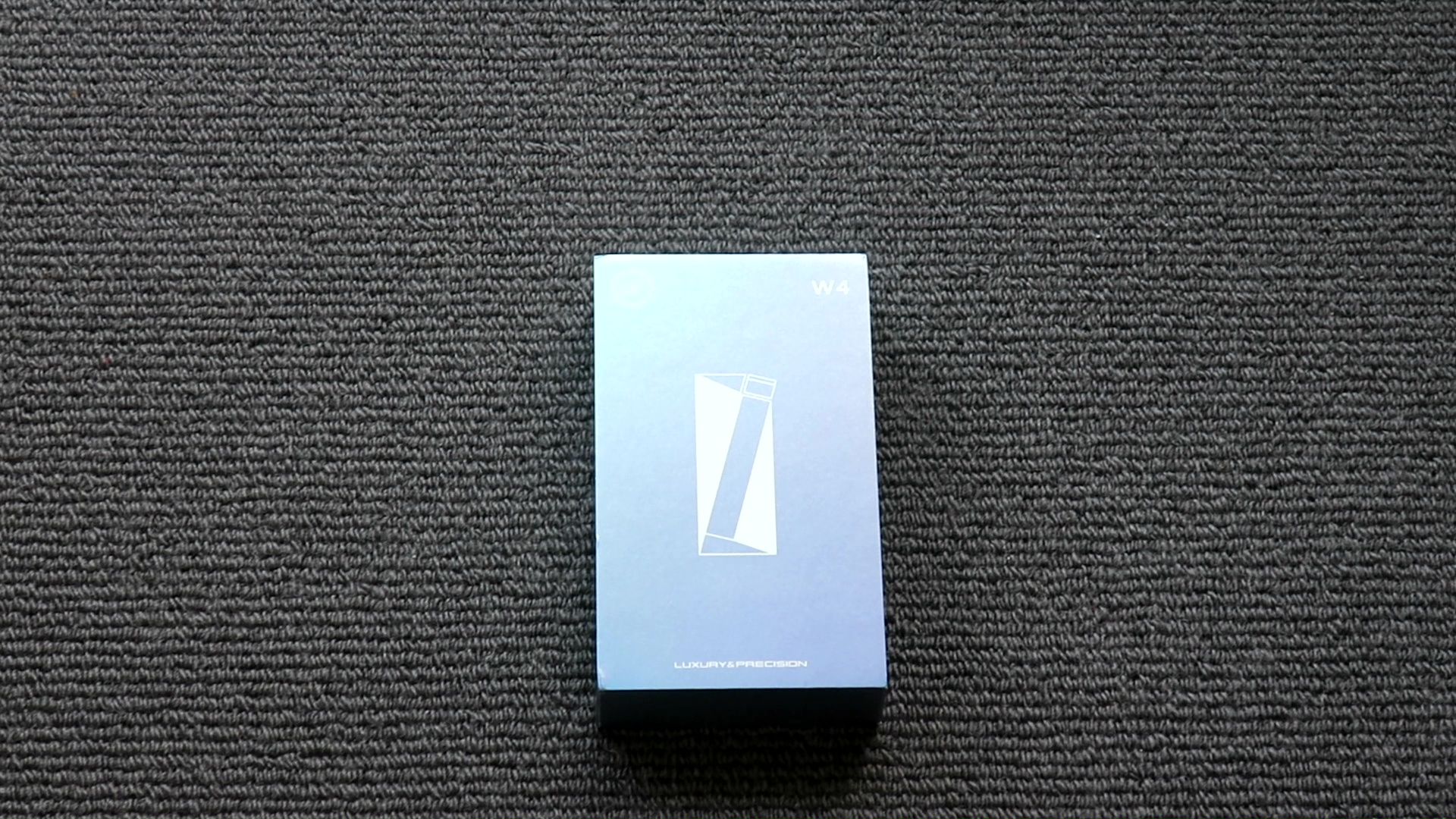

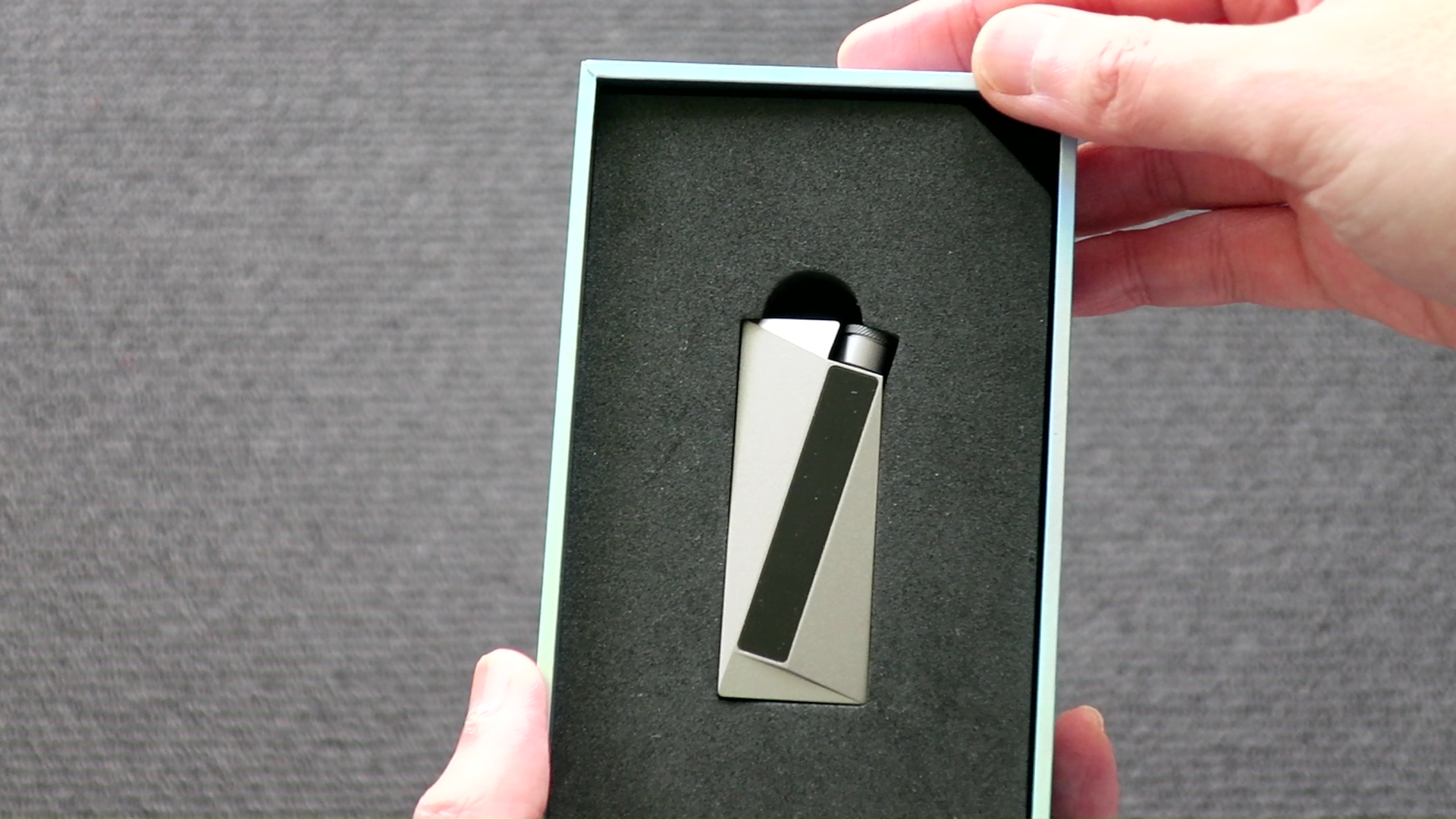
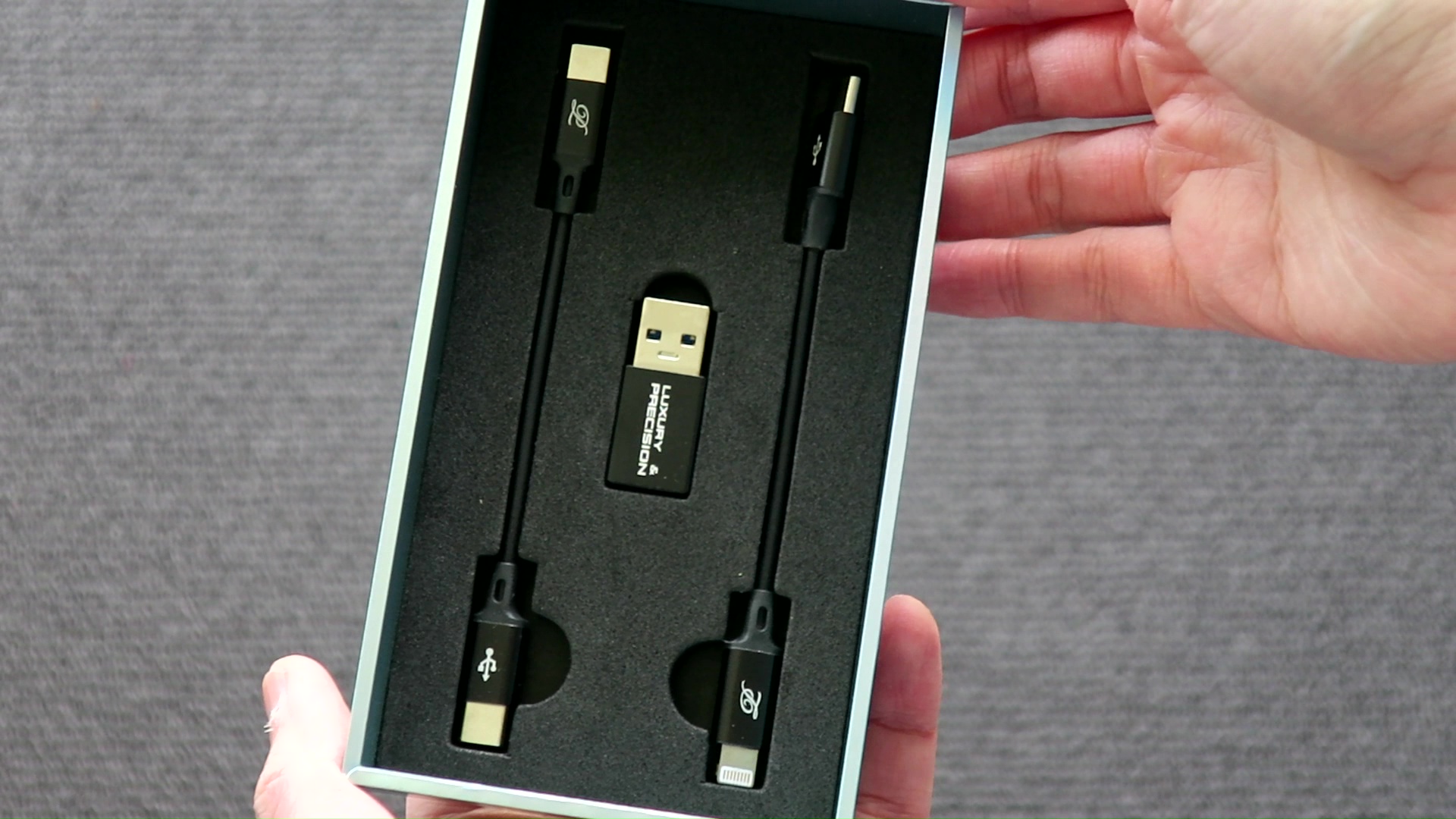
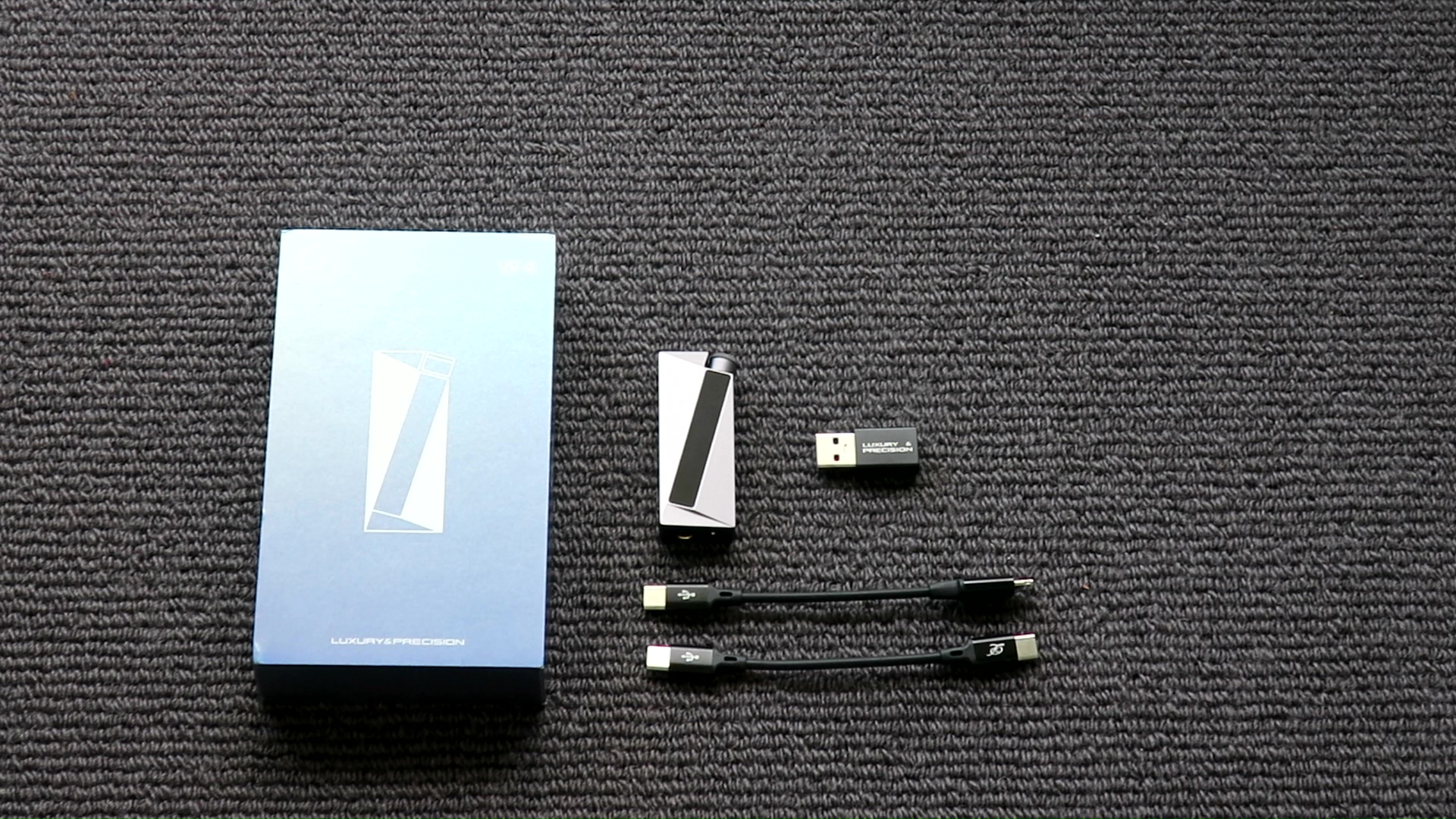
W4 came in a nice box with custom foams, which offer strong protection for the content. Inside the box, you can find the W4 and all cables and adapter that you need to connect W4 to any phone, computer, or tablet.
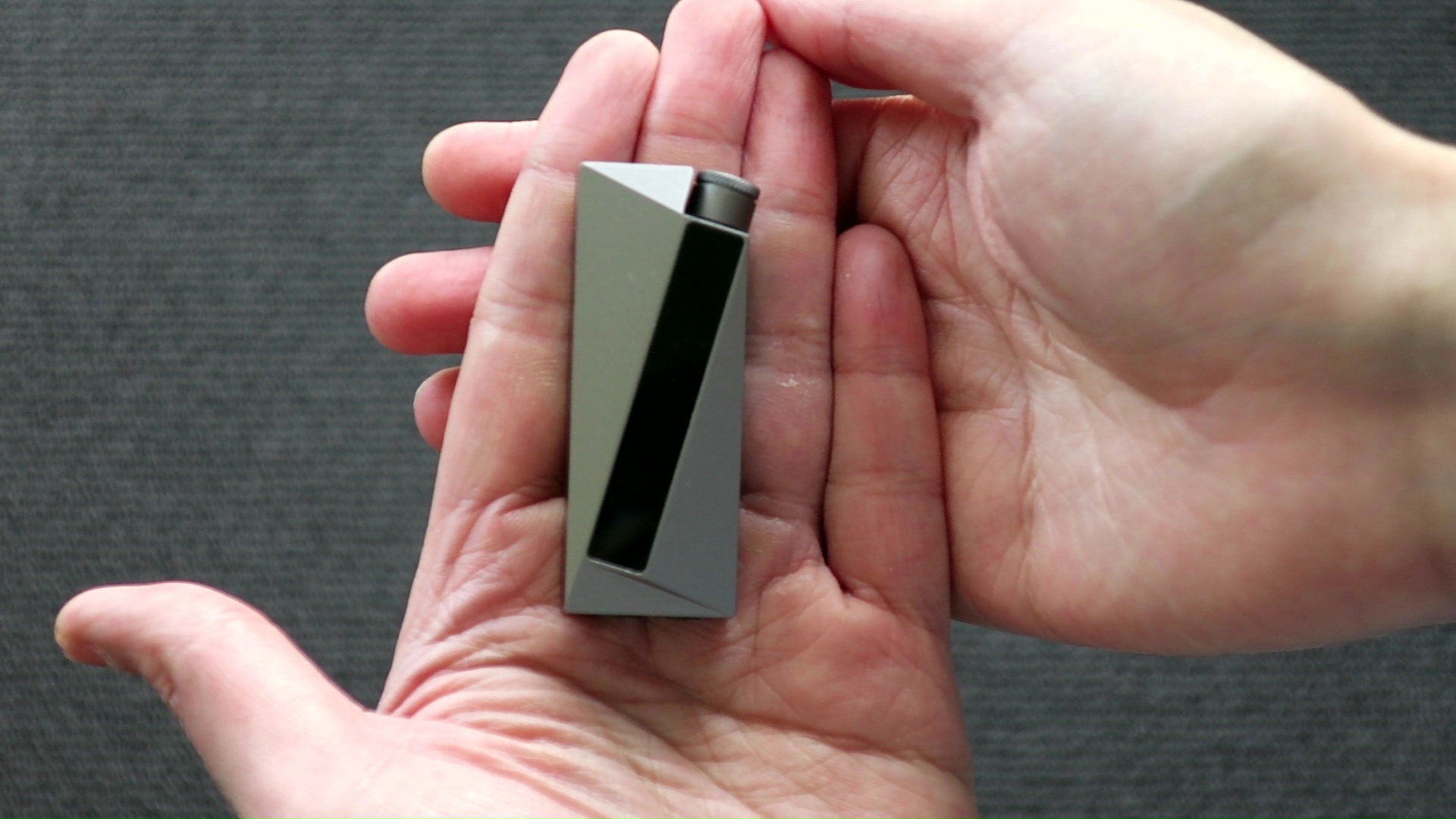
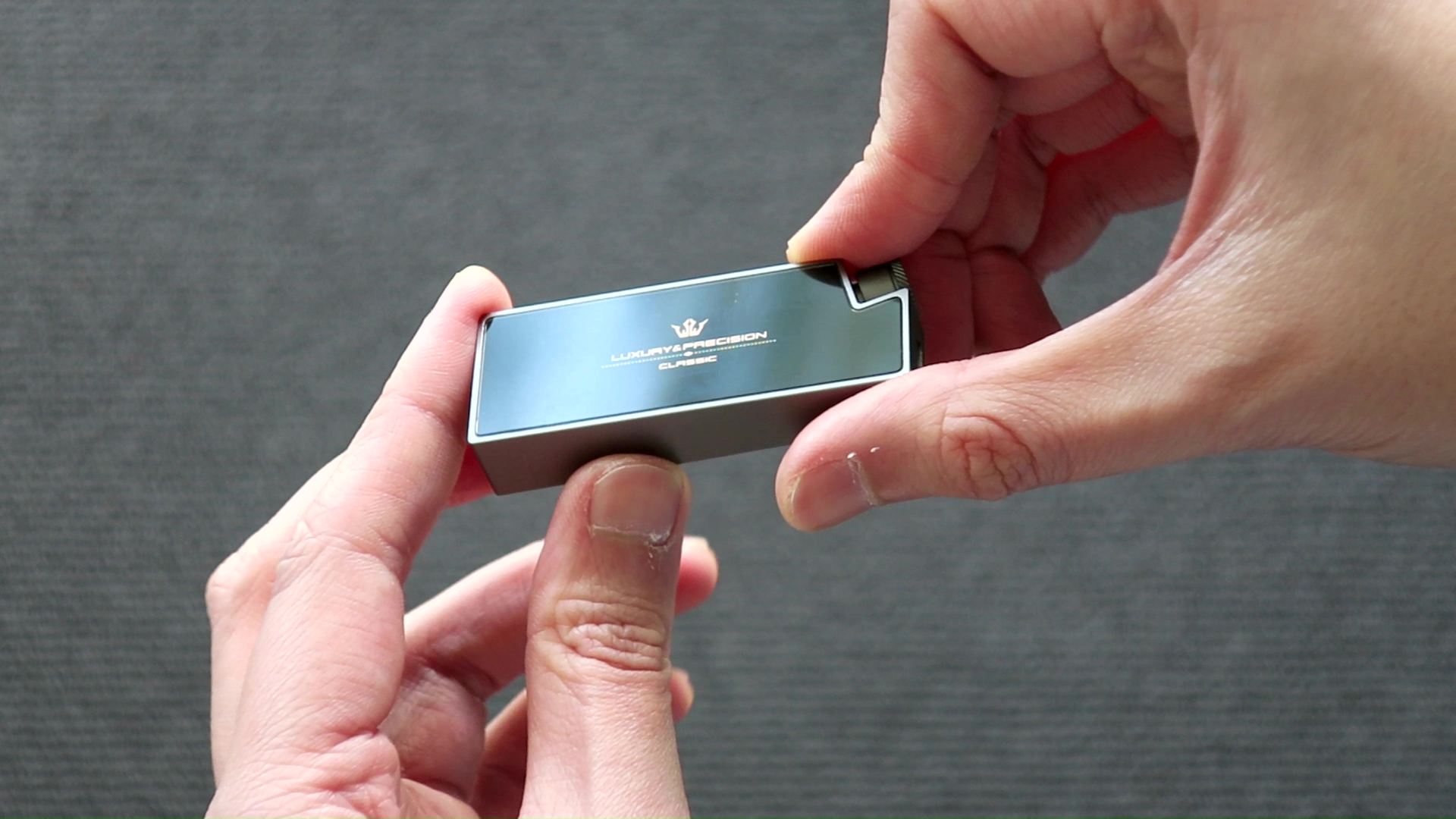

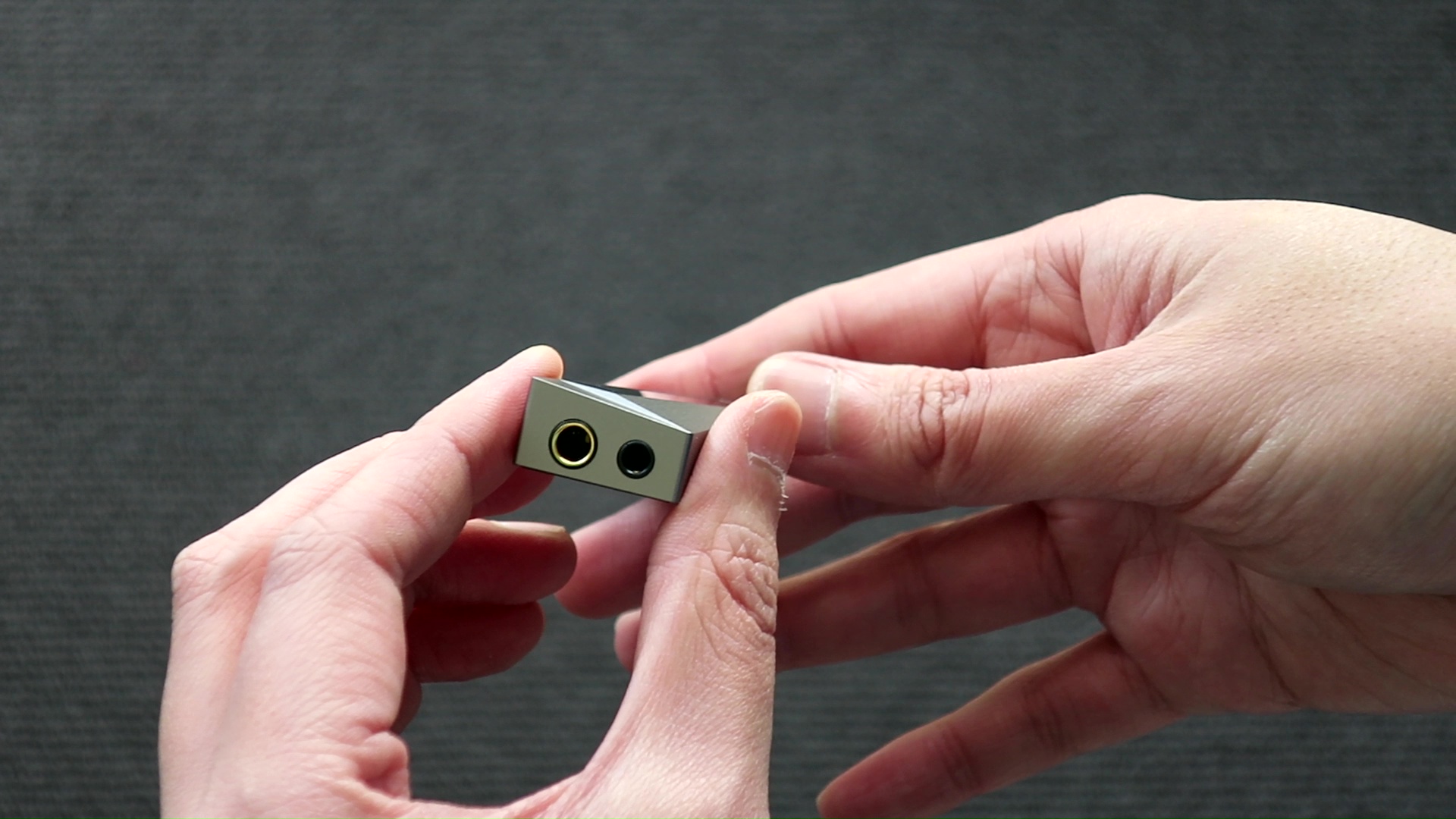
One thing that immediately caught my attention when unboxing W4 was its size - it was quite large compared to other dongles in my collection, even bigger than the FiiO KA3 with a similar output configuration. Another highlight was the overall design and construction. The W4’s appearance impressed me with its chisel cuts, clean corners, and angled screen at the front, giving it a more premium look.
The W4’s features are controlled through a volume knob, which also doubles as a button. I didn’t find much need to use this button, except to explore the different settings it offered when I first unboxed the device. The dongle provides options for low-pass filters, generic and IEM-specific EQ profiles, as well as two tuning types that produce distinct sound signatures and soundstage presentations. I opted for the setting that diffused the soundstage center more, as I like larger soundstage.
According to L&P, one of the key advantages of the W4 is its reduced power drain. I found this claim to be quite accurate, as the dongle only drained my old iPhone XR by 15% per hour while watching YouTube. However, the idle battery drain was disappointingly high, with 65% of the battery being depleted overnight when the dongle remained attached to the iPhone XR without any active apps running.
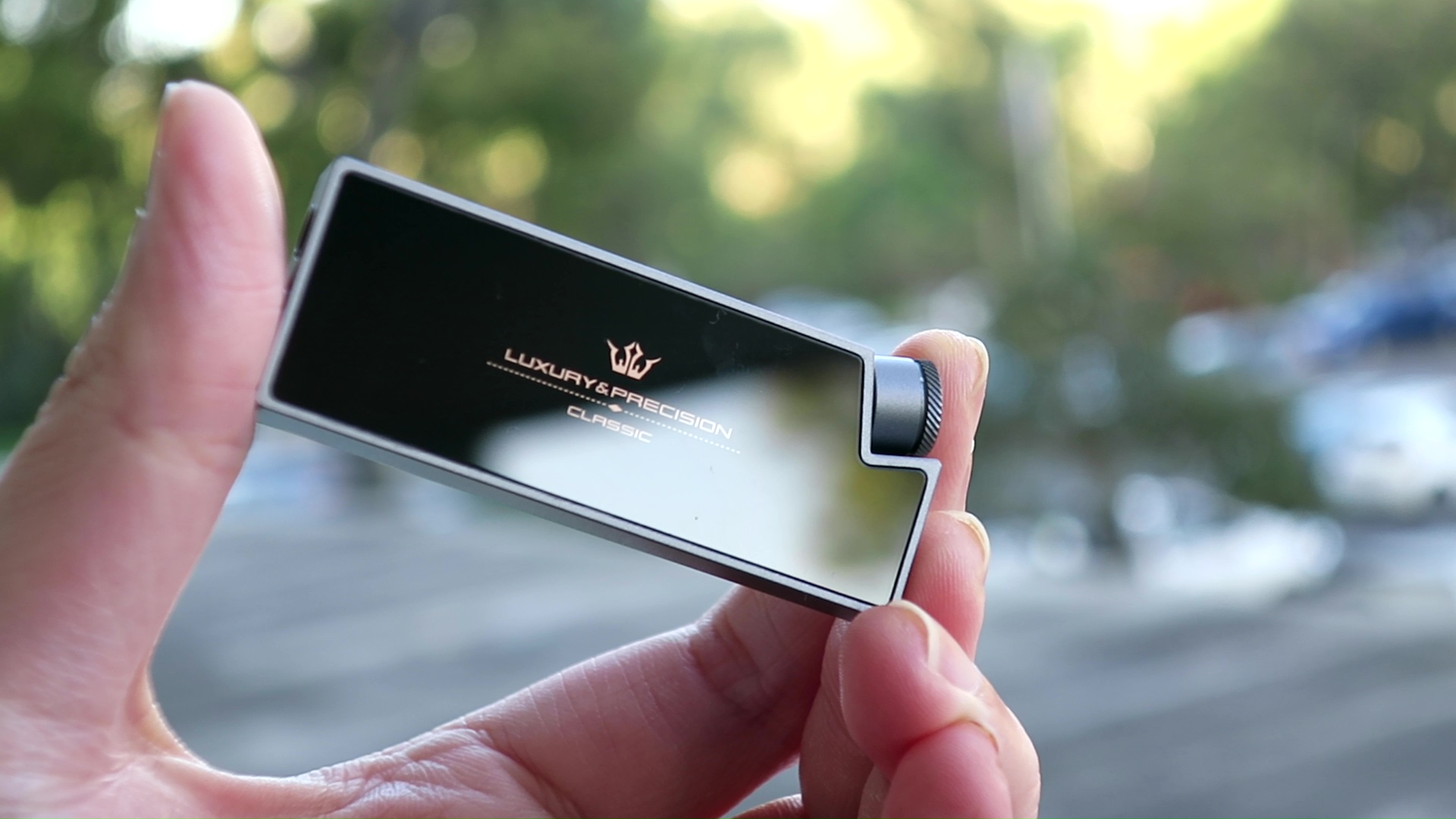
In terms of usability, the W4 inherits the ergonomic disadvantages typical of the dongle form factor. It tends to dangle from the lightning or USB-C port of your device, leading to a tangled mess of cables and occasional disconnection if things are not securely in place. The presence of a volume knob further complicates matters, as it can be challenging to adjust blindly when the dongle is in your pocket.
As for compatibility, I had no major issues using the W4 with various devices, including old Android phones, Windows laptops, MacBooks, iPads, and iPhones. However, there was a slight hiccup with the iPhone’s stock cable, which worked flawlessly with the lightning cable from FiiO. Nevertheless, I must mention that the next reviewer in the tour reported that the W4 stopped working with their iPhone, so this is something potential buyers should be aware of. In general, iPhones can be a bit unpredictable with USB dongles, and it’s not entirely L&P’s fault if compatibility issues arise.
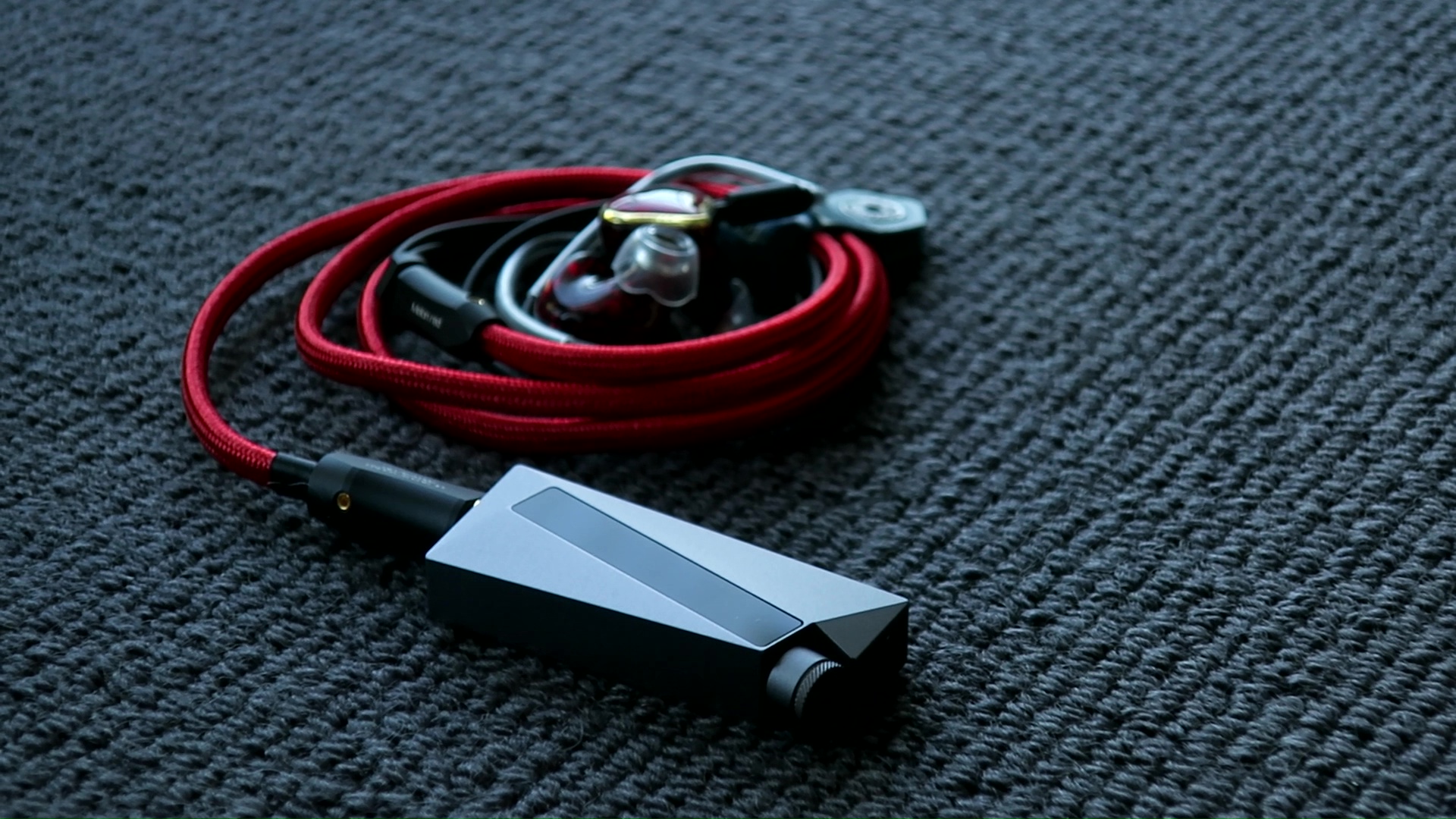
Perceived Tonality The tonality of the W4 leaves a positive impression on me, and it bears some resemblance to the Apple dongle in a favorable way. When listening to the W4 on its own, I find its overall tonality to be “natural” without any particular elements standing out prominently. It doesn’t add noticeable warmth or thickness to the vocals and instruments, aiming for a more faithful representation of the music.
However, when I directly compare the W4 to certain dongles with bright and dry tonal characteristics, most of which happen to use ESS DAC chips, I do notice a slight deviation. The W4 exhibits a somewhat warmer tonality with some extra energy in the lower-mid and midbass regions. On the higher end of the frequency spectrum, the upper midrange doesn’t come across as overly bright, and the treble lacks any harshness or glare.
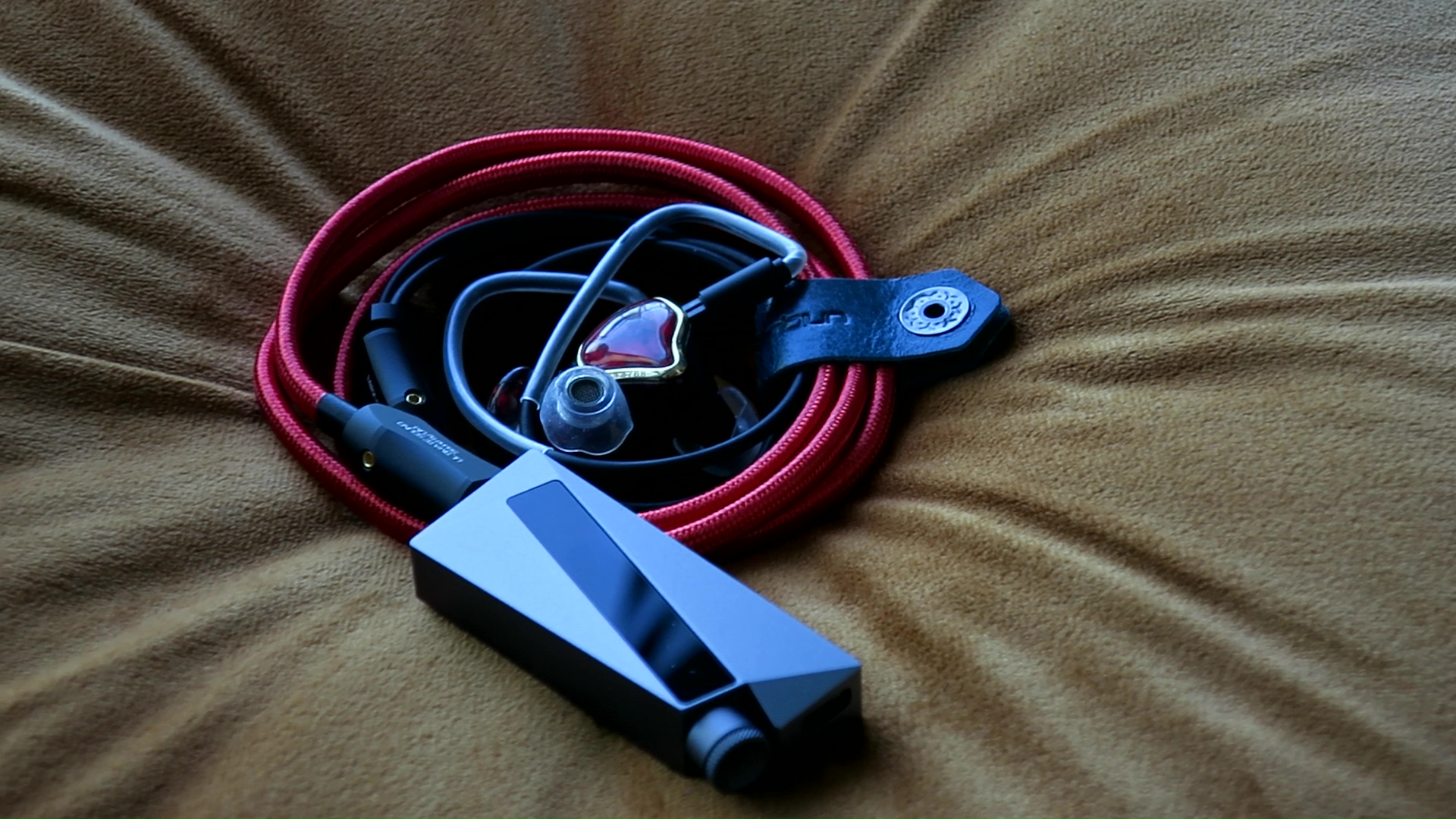
Perceived Technical Performance As I primarily use IEM, I prefer to maximize the limited soundstage and dynamic of these device to mimic a “larger” listening experience. Most USB-powered dongles tend to be limited in terms of soundstage expansion and dynamics in comparison to external-powered devices and desktop setups. Therefore, I have moved away from the “dongle life.”
However, the W4 defies the usual trend for dongles in a pleasant surprise. I was delighted to find that the W4 manages to maintain the soundstage size of most of my IEMs quite well, even when compared to my desktop DAC/amp setup like the FiiO K7 or the Shanling M6 Ultra music player, both of which I consider decent in terms of soundstage performance.
The dynamic performance of the W4 also impressed me. With few exceptions for the most demanding IEMs and earbuds, the W4 reproduces rapid volume swings (referred to as “slam”) at the start of bass notes almost as effectively as my larger setups. Furthermore, it demonstrates better control and detail in the lower frequencies, resulting in improved texture and pitch accuracy for instruments like the bass guitar.
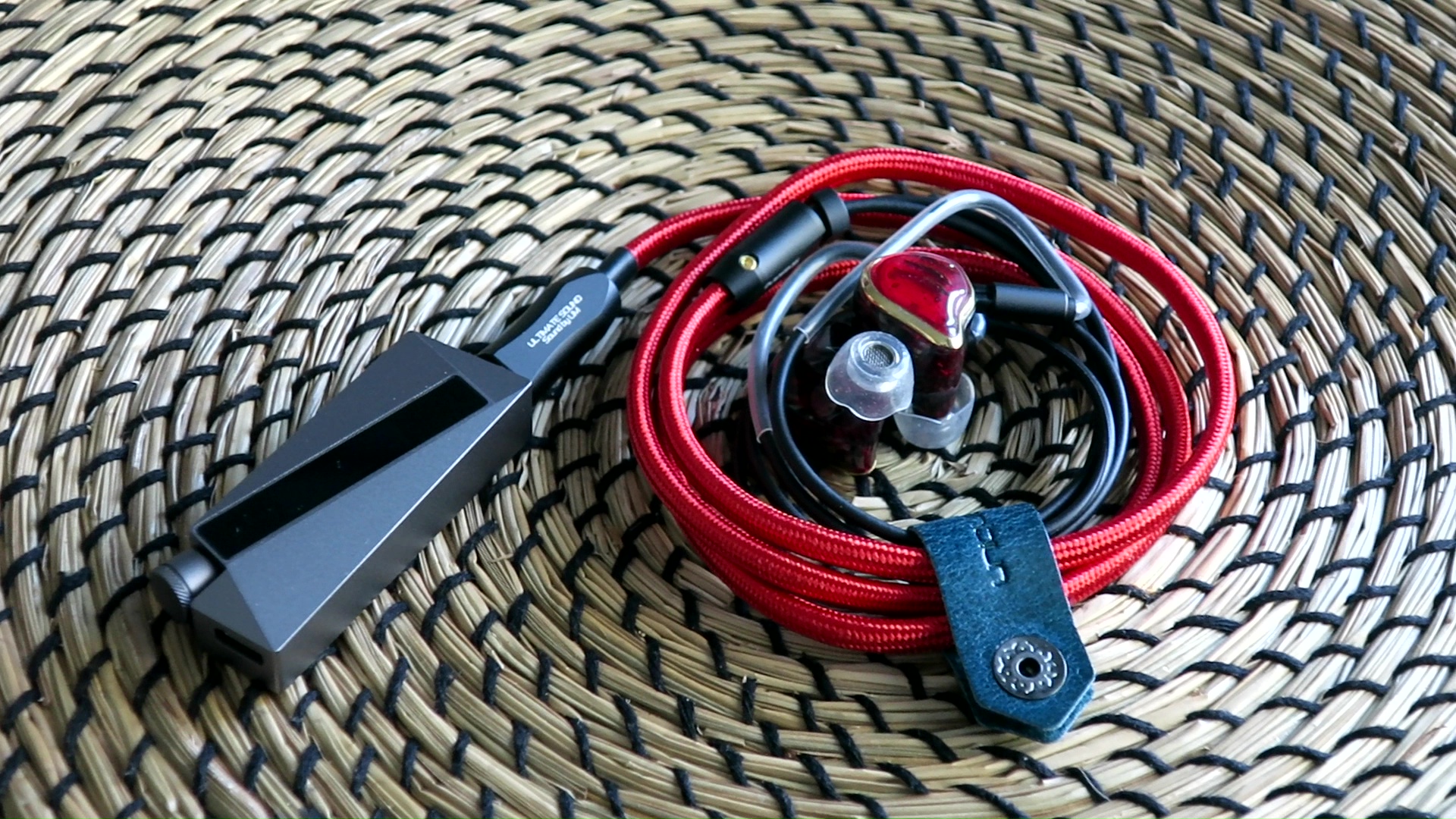
Easy IEMs: Testing the W4 with easy-to-drive IEMs like the 64 Audio U12T is always my first step when evaluating any new audio source that comes my way for review. The U12T falls within the amplification sweet spot of the Apple dongle, which typically handles these IEMs well, and improvements from other sources are usually subtle. For this comparison, I selected the FiiO KA3 as my “baseline” dongle.
With the KA3, I noticed that when listening to “Livin’ On a Prayer” by Bon Jovi, the voices and instruments felt aggressive and pushed toward the listener, creating a sensation of a bump around 1.25kHz. Consequently, the soundstage felt flat and upfront, and the cymbals and hats exhibited a metallic and piercing quality. The bass guitar lacked presence and texture, making it challenging to follow.
Upon switching to the W4, I immediately observed a difference. The voices and instruments no longer felt in-your-face, and as a result, the soundstage gained proper depth and layering. The cymbals and hats still had a metallic quality, but it was less piercing and uncomfortable. Though the bass guitar still lacked some presence, I could now perceive the low-pitched rumble and texture.
Further upgrading to the DX300, I noticed yet another improvement in soundstage projection. The stage felt expanded, encompassing the head like a dome from the opening notes. The cymbals and hats lost their metallic timbre and gained more nuances and details. Interestingly, I found it easier to follow the notes of the bass guitar with the DX300.
At this point, the comparison seemed to favor the W4, positioning it between a good dongle and a full-sized, high-end music player in terms of performance. However, to make the assessment more comprehensive, I introduced another well-performing dongle, the Hidizs XO, for further comparison. Surprisingly, I discovered that the stage shape of the XO was very similar to the W4, and in fact, the XO seemed to provide even more space between instruments. However, the midrange on the XO sounded brighter, and this difference may be the root cause of the variation in their presentations.
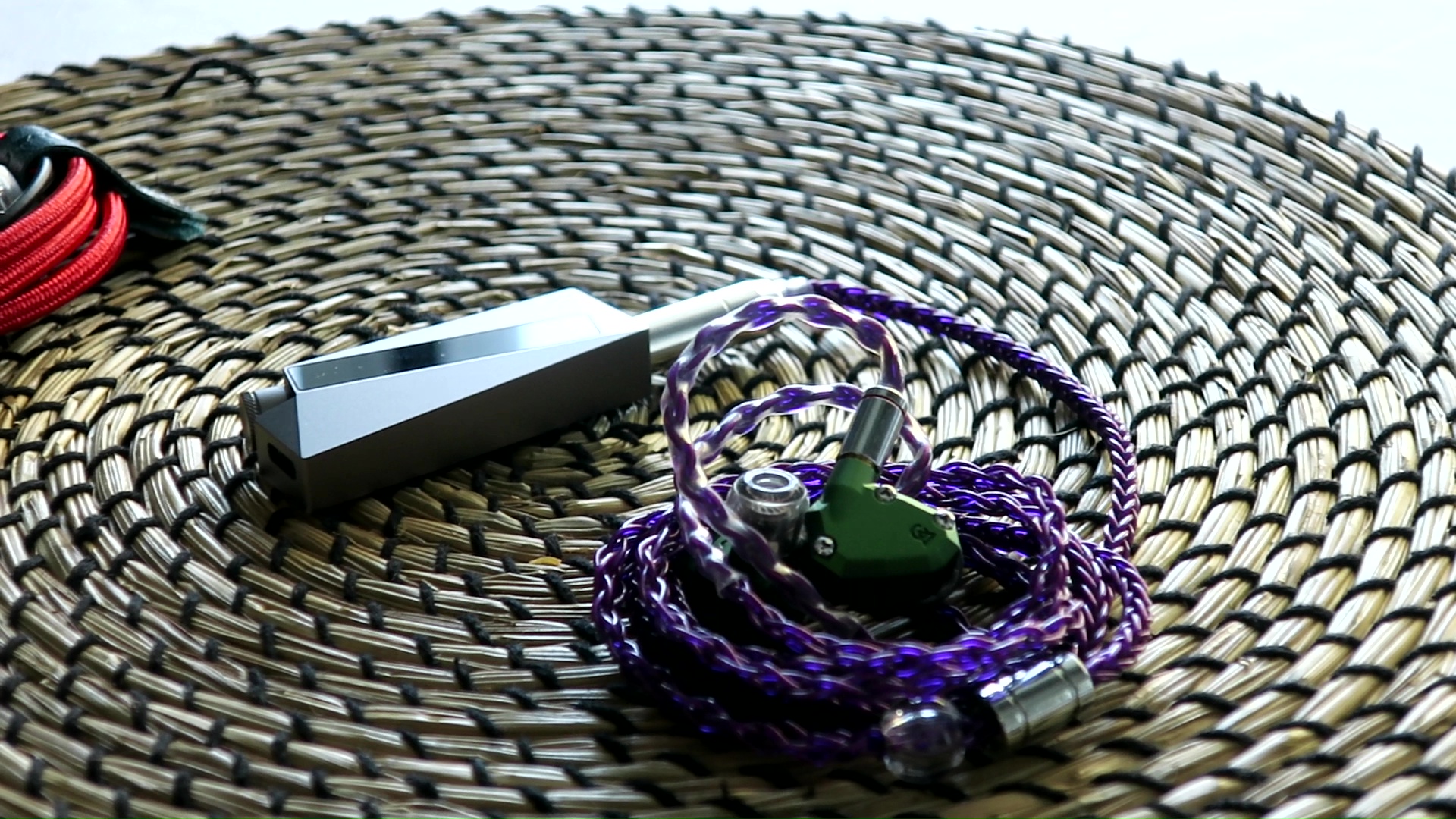
Low-impedance, high-sensitivity IEMs: Moving on to the next test, I evaluate the W4’s performance with the Campfire Audio Andromeda 2020, known for its hypersensitivity and finicky nature. To begin, I use the FiiO KA3 with the Andromeda 2020 through its balanced output. Listening to “Let the Battles Begin!” by Square Enix Music and Nobuo Uematsu, I notice a faint hissing noise in the background, which affects the overall experience. The KA3’s presentation pushes the soundstage forward, diminishing the sense of depth and the 3D illusion. The midrange also feels somewhat muddy and foggy, failing to showcase the Andromeda’s true capabilities. As a result, this pairing makes the Andromeda sound rather ordinary, lacking that special quality I expect.
Switching to the W4, I’m pleased to find a dead quiet background. This, coupled with the tuning, allows the Andromeda to shine with a notably stronger sense of depth, accurately placing instruments at varying distances from the listener. Additionally, the midrange becomes cleaner and more defined, and there’s a slight boost in dynamic swing, leading to a better overall pairing between the two.
Transitioning to the DX300, one of the first things I notice is the loss of the previously dark background. When the music stops, there’s a slight hiss before the amp turns off. In terms of dynamic performance, it remains mostly consistent with what I experienced with the W4. However, the soundstage feels wider compared to the W4, with sounds appearing to be pushed further away from the ears, creating a more encompassing dome-like effect around the head.
To further complicate the comparison, I introduce the Hidizs XO into the mix. Similar to the W4, the XO maintains a dark and clean background. The expansion of the soundstage is also quite similar to the W4. However, I find that the XO’s midrange feels thinner, and the overall dynamic performance is not as strong as what I observed with the W4.

Low-impedance, low-sensitivity IEM: In this test, I evaluate the W4’s performance with the Final Audio E5000, which is a challenging IEM to drive due to its low impedance, low sensitivity, and significant bass boost. Starting with the FiiO KA3, I listen to “G.O.A.T.” by Polyphia and notice that the bass presence is there, but it feels fuzzy around the attacking edge. This fuzziness extends to the midrange, where I detect an odd artifact, almost like a “mist” or “fog,” adding a peculiar “echo” to the lower midrange. Though faint, once noticed, it becomes hard to ignore and may be related to some form of distortion. On the positive side, the furthest background layer of the soundstage remains properly expanded, creating a sense of space and distance.
Upon switching to the W4, I immediately observe that the odd artifact heard with the KA3 is gone. The midrange cleans up nicely, and most of the fuzziness disappears. The attack edge of slams from 0:40 onwards also becomes cleaner, although it still lacks ultimate sharpness.
Switching to the DX300 represents a significant leap in performance. The E5000 now finally slams with a rock-solid and sharp attacking edge. The midrange sounds crisp and clean, and there’s a noticeably stronger sense of depth. While it doesn’t feel too loud, instruments seem to project forward with more space between them. This level of performance is on par with what I experience when using the E5000 with my desktop setup.
To further compare with the W4, I introduce the Hidizs XO into the mix. Interestingly, the XO falls noticeably behind the W4. It fails to produce a noticeable slam, and all the instruments feel more closed in. The midrange is not particularly clean, though it doesn’t suffer from fuzziness like the KA3. Thankfully, there is no odd artifact similar to what I experienced with the KA3. This comparison serves to highlight the prowess of the amp stage of the W4.
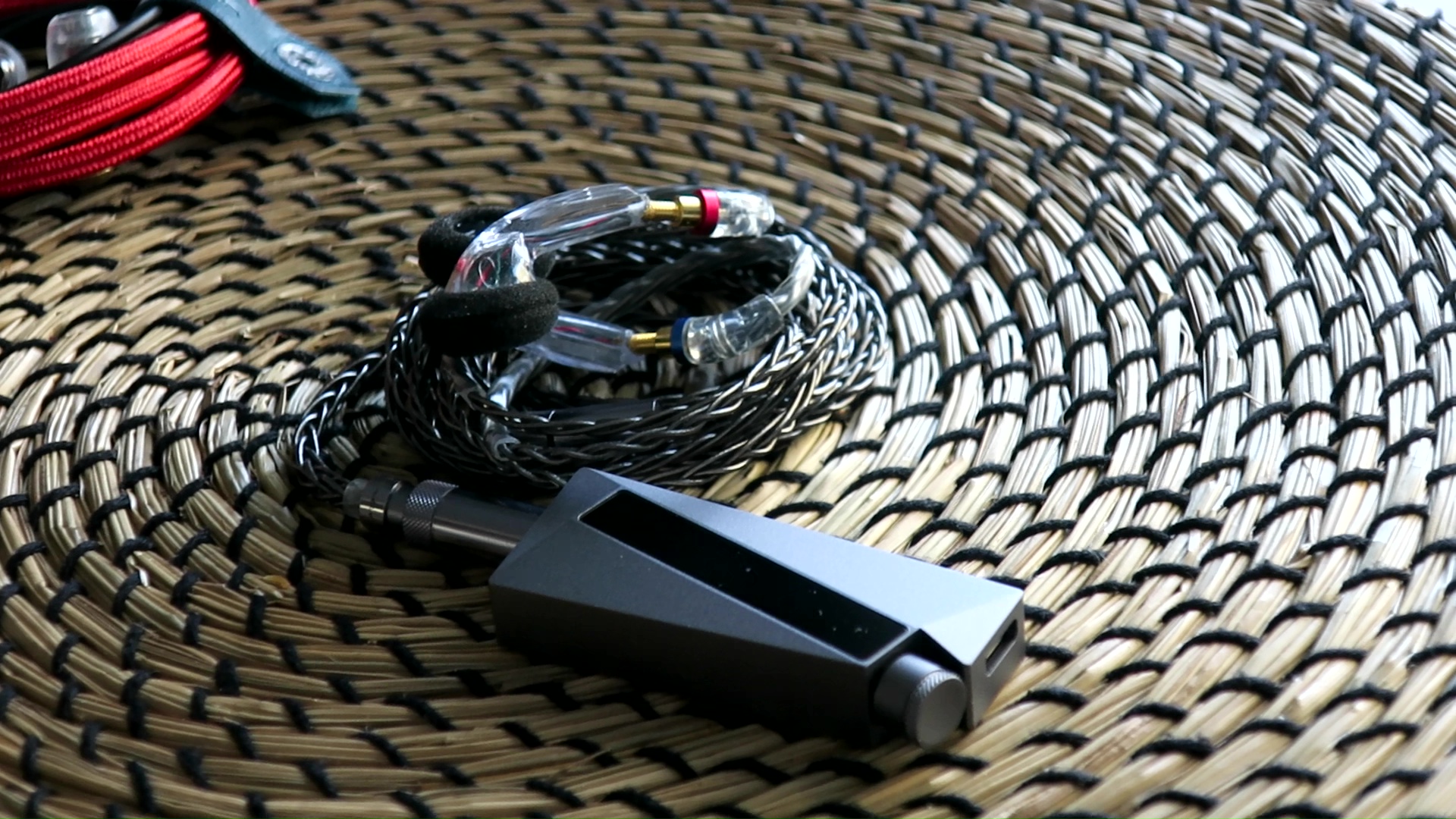
High-impedance transducers: For the final test, I evaluate the W4’s performance with my DIY earbuds featuring a 300-ohm LCP driver. Using the FiiO KA3, I listen to “Hotel California” (Live On MTV, 1994) and find that the soundstage appears flat, with midrange vocals and instruments pushed forward, almost converging into a wall of sound. The tonality seems unbalanced towards the upper frequencies, resulting in slightly thinner and harsher vocals.
Upon switching to the W4, I notice a more balanced and “rounder” tonality, which enhances the richness and enjoyability of voices and instruments. The improved balance also brings out stronger dynamic swings during the attack of bass notes. Additionally, I find that the soundstage feels rounder with a proper sense of depth. However, it doesn’t feel fully expanded, as the focus remains centered on the stage.
Transitioning to the DX300, I can discern slightly more nuances and details, particularly in the opening guitar and hand drums. The soundstage sees significant improvement, with a larger and more expansive presentation that extends further into the environment around me. The instruments on the stage also appear larger, contributing to an overall sense of grandeur that surpasses that of regular IEMs. Furthermore, the DX300 excels in creating a stronger sense of layering compared to any of the dongles tested.
Finally, I compare the W4 with the Hidizs XO. The stage of the XO feels larger but flatter compared to the W4. The tonality of the XO is noticeably colder, and the opening bass lacks the punchiness found in the W4. Overall, the sense of dynamic with the XO is somewhat weak in comparison.
Of course, the elephant in the room in the price, which can match entry-level Android-based DAP. With W4, L&P helps you to make the decision by taking the sonic difference out of the picture. The question is what type of devil that you are willing to accept: bringing and managing an additional device or draining your phone’s battery for music. There is no right or wrong choice, just preference.
Pros:
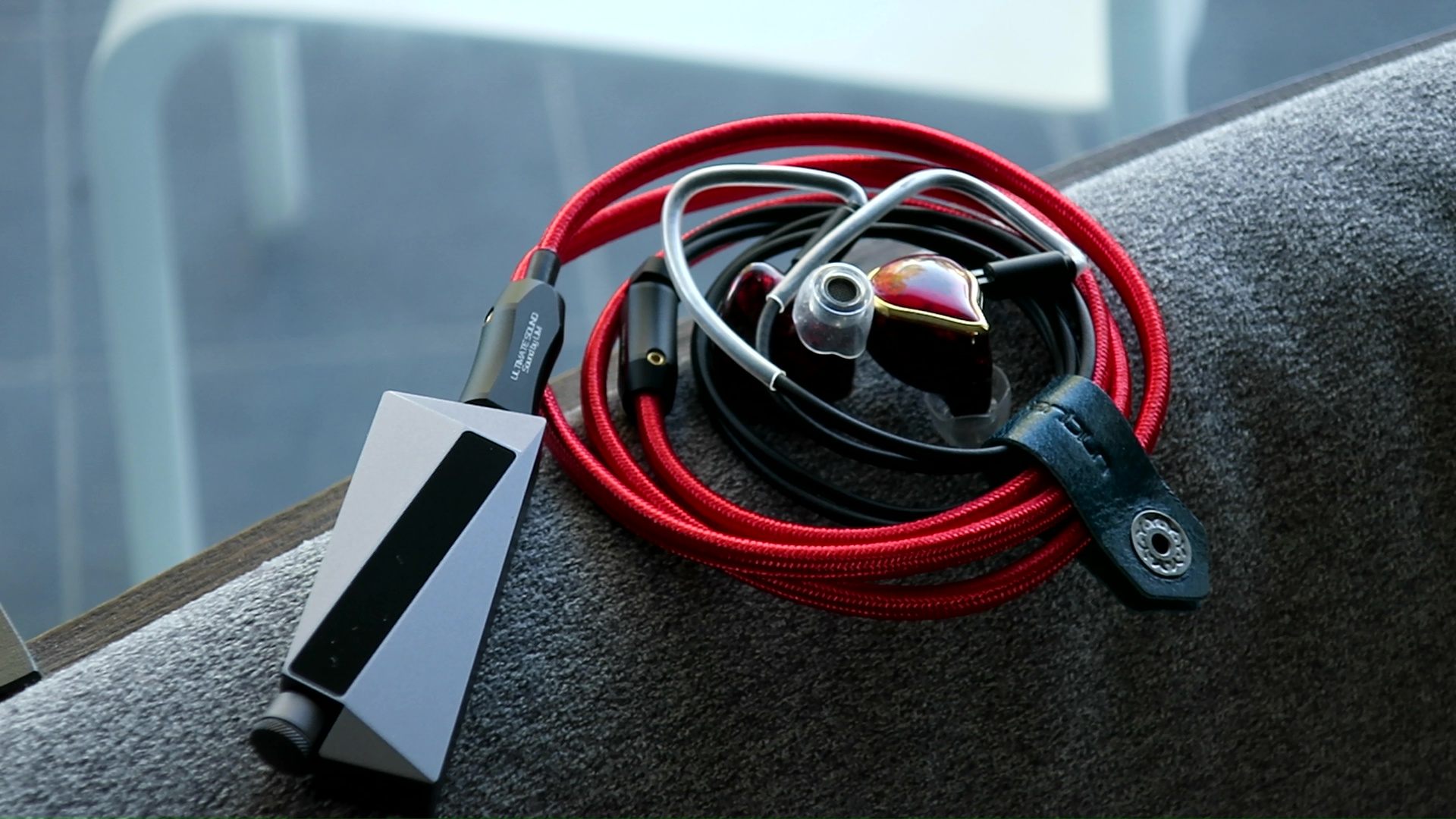
Updated: July 29, 2023
Preambles:
- In this review, I use the term “source” to denote a DAC+amp combo for brevity and convenience.
- Sources do not make sounds. Therefore, when I say sources “sound” a certain way, I talk about the change they make to my IEMs and earphones.
- I want my music to be crisp, clear, well-separated and form a 3D soundstage around my head. Sources that intensify those characteristics of my IEMs are considered “better”.
- This review is possible thanks to the Australian Head-Fi Tour (Thank you @Damz87 for arranging). The sample of W4 has been sent to the next reviewer in the tour after this review. I have no affiliation with or financial interest in L&P. The unit retails for $449 at MusicTeck.
Specs:
- DAC Chips: LP5108 (In-house designed)
- Output ports: 3.5mm (Single-ended) and 4.4mm (balanced)
- Single-ended output power: 110mW@32ohm per channel@THD+N < 0.01%
- Balanced output power: 420mW@32ohm per channel@THD+N < 0.01%
Non-sound Aspects





W4 came in a nice box with custom foams, which offer strong protection for the content. Inside the box, you can find the W4 and all cables and adapter that you need to connect W4 to any phone, computer, or tablet.




One thing that immediately caught my attention when unboxing W4 was its size - it was quite large compared to other dongles in my collection, even bigger than the FiiO KA3 with a similar output configuration. Another highlight was the overall design and construction. The W4’s appearance impressed me with its chisel cuts, clean corners, and angled screen at the front, giving it a more premium look.
The W4’s features are controlled through a volume knob, which also doubles as a button. I didn’t find much need to use this button, except to explore the different settings it offered when I first unboxed the device. The dongle provides options for low-pass filters, generic and IEM-specific EQ profiles, as well as two tuning types that produce distinct sound signatures and soundstage presentations. I opted for the setting that diffused the soundstage center more, as I like larger soundstage.
According to L&P, one of the key advantages of the W4 is its reduced power drain. I found this claim to be quite accurate, as the dongle only drained my old iPhone XR by 15% per hour while watching YouTube. However, the idle battery drain was disappointingly high, with 65% of the battery being depleted overnight when the dongle remained attached to the iPhone XR without any active apps running.

In terms of usability, the W4 inherits the ergonomic disadvantages typical of the dongle form factor. It tends to dangle from the lightning or USB-C port of your device, leading to a tangled mess of cables and occasional disconnection if things are not securely in place. The presence of a volume knob further complicates matters, as it can be challenging to adjust blindly when the dongle is in your pocket.
As for compatibility, I had no major issues using the W4 with various devices, including old Android phones, Windows laptops, MacBooks, iPads, and iPhones. However, there was a slight hiccup with the iPhone’s stock cable, which worked flawlessly with the lightning cable from FiiO. Nevertheless, I must mention that the next reviewer in the tour reported that the W4 stopped working with their iPhone, so this is something potential buyers should be aware of. In general, iPhones can be a bit unpredictable with USB dongles, and it’s not entirely L&P’s fault if compatibility issues arise.
Sound Performance

Perceived Tonality The tonality of the W4 leaves a positive impression on me, and it bears some resemblance to the Apple dongle in a favorable way. When listening to the W4 on its own, I find its overall tonality to be “natural” without any particular elements standing out prominently. It doesn’t add noticeable warmth or thickness to the vocals and instruments, aiming for a more faithful representation of the music.
However, when I directly compare the W4 to certain dongles with bright and dry tonal characteristics, most of which happen to use ESS DAC chips, I do notice a slight deviation. The W4 exhibits a somewhat warmer tonality with some extra energy in the lower-mid and midbass regions. On the higher end of the frequency spectrum, the upper midrange doesn’t come across as overly bright, and the treble lacks any harshness or glare.

Perceived Technical Performance As I primarily use IEM, I prefer to maximize the limited soundstage and dynamic of these device to mimic a “larger” listening experience. Most USB-powered dongles tend to be limited in terms of soundstage expansion and dynamics in comparison to external-powered devices and desktop setups. Therefore, I have moved away from the “dongle life.”
However, the W4 defies the usual trend for dongles in a pleasant surprise. I was delighted to find that the W4 manages to maintain the soundstage size of most of my IEMs quite well, even when compared to my desktop DAC/amp setup like the FiiO K7 or the Shanling M6 Ultra music player, both of which I consider decent in terms of soundstage performance.
The dynamic performance of the W4 also impressed me. With few exceptions for the most demanding IEMs and earbuds, the W4 reproduces rapid volume swings (referred to as “slam”) at the start of bass notes almost as effectively as my larger setups. Furthermore, it demonstrates better control and detail in the lower frequencies, resulting in improved texture and pitch accuracy for instruments like the bass guitar.
Comparisons and Rating
Gears for A/B tests:- iBasso DX300
- Shanling M6 Ultra
- Topping G5
- FiiO KA3
- Hidizs XO
- 64 Audio U12T
- Andromeda 2020
- Final Audio E5000
- DIY 300ohm earbuds

Easy IEMs: Testing the W4 with easy-to-drive IEMs like the 64 Audio U12T is always my first step when evaluating any new audio source that comes my way for review. The U12T falls within the amplification sweet spot of the Apple dongle, which typically handles these IEMs well, and improvements from other sources are usually subtle. For this comparison, I selected the FiiO KA3 as my “baseline” dongle.
With the KA3, I noticed that when listening to “Livin’ On a Prayer” by Bon Jovi, the voices and instruments felt aggressive and pushed toward the listener, creating a sensation of a bump around 1.25kHz. Consequently, the soundstage felt flat and upfront, and the cymbals and hats exhibited a metallic and piercing quality. The bass guitar lacked presence and texture, making it challenging to follow.
Upon switching to the W4, I immediately observed a difference. The voices and instruments no longer felt in-your-face, and as a result, the soundstage gained proper depth and layering. The cymbals and hats still had a metallic quality, but it was less piercing and uncomfortable. Though the bass guitar still lacked some presence, I could now perceive the low-pitched rumble and texture.
Further upgrading to the DX300, I noticed yet another improvement in soundstage projection. The stage felt expanded, encompassing the head like a dome from the opening notes. The cymbals and hats lost their metallic timbre and gained more nuances and details. Interestingly, I found it easier to follow the notes of the bass guitar with the DX300.
At this point, the comparison seemed to favor the W4, positioning it between a good dongle and a full-sized, high-end music player in terms of performance. However, to make the assessment more comprehensive, I introduced another well-performing dongle, the Hidizs XO, for further comparison. Surprisingly, I discovered that the stage shape of the XO was very similar to the W4, and in fact, the XO seemed to provide even more space between instruments. However, the midrange on the XO sounded brighter, and this difference may be the root cause of the variation in their presentations.

Low-impedance, high-sensitivity IEMs: Moving on to the next test, I evaluate the W4’s performance with the Campfire Audio Andromeda 2020, known for its hypersensitivity and finicky nature. To begin, I use the FiiO KA3 with the Andromeda 2020 through its balanced output. Listening to “Let the Battles Begin!” by Square Enix Music and Nobuo Uematsu, I notice a faint hissing noise in the background, which affects the overall experience. The KA3’s presentation pushes the soundstage forward, diminishing the sense of depth and the 3D illusion. The midrange also feels somewhat muddy and foggy, failing to showcase the Andromeda’s true capabilities. As a result, this pairing makes the Andromeda sound rather ordinary, lacking that special quality I expect.
Switching to the W4, I’m pleased to find a dead quiet background. This, coupled with the tuning, allows the Andromeda to shine with a notably stronger sense of depth, accurately placing instruments at varying distances from the listener. Additionally, the midrange becomes cleaner and more defined, and there’s a slight boost in dynamic swing, leading to a better overall pairing between the two.
Transitioning to the DX300, one of the first things I notice is the loss of the previously dark background. When the music stops, there’s a slight hiss before the amp turns off. In terms of dynamic performance, it remains mostly consistent with what I experienced with the W4. However, the soundstage feels wider compared to the W4, with sounds appearing to be pushed further away from the ears, creating a more encompassing dome-like effect around the head.
To further complicate the comparison, I introduce the Hidizs XO into the mix. Similar to the W4, the XO maintains a dark and clean background. The expansion of the soundstage is also quite similar to the W4. However, I find that the XO’s midrange feels thinner, and the overall dynamic performance is not as strong as what I observed with the W4.

Low-impedance, low-sensitivity IEM: In this test, I evaluate the W4’s performance with the Final Audio E5000, which is a challenging IEM to drive due to its low impedance, low sensitivity, and significant bass boost. Starting with the FiiO KA3, I listen to “G.O.A.T.” by Polyphia and notice that the bass presence is there, but it feels fuzzy around the attacking edge. This fuzziness extends to the midrange, where I detect an odd artifact, almost like a “mist” or “fog,” adding a peculiar “echo” to the lower midrange. Though faint, once noticed, it becomes hard to ignore and may be related to some form of distortion. On the positive side, the furthest background layer of the soundstage remains properly expanded, creating a sense of space and distance.
Upon switching to the W4, I immediately observe that the odd artifact heard with the KA3 is gone. The midrange cleans up nicely, and most of the fuzziness disappears. The attack edge of slams from 0:40 onwards also becomes cleaner, although it still lacks ultimate sharpness.
Switching to the DX300 represents a significant leap in performance. The E5000 now finally slams with a rock-solid and sharp attacking edge. The midrange sounds crisp and clean, and there’s a noticeably stronger sense of depth. While it doesn’t feel too loud, instruments seem to project forward with more space between them. This level of performance is on par with what I experience when using the E5000 with my desktop setup.
To further compare with the W4, I introduce the Hidizs XO into the mix. Interestingly, the XO falls noticeably behind the W4. It fails to produce a noticeable slam, and all the instruments feel more closed in. The midrange is not particularly clean, though it doesn’t suffer from fuzziness like the KA3. Thankfully, there is no odd artifact similar to what I experienced with the KA3. This comparison serves to highlight the prowess of the amp stage of the W4.

High-impedance transducers: For the final test, I evaluate the W4’s performance with my DIY earbuds featuring a 300-ohm LCP driver. Using the FiiO KA3, I listen to “Hotel California” (Live On MTV, 1994) and find that the soundstage appears flat, with midrange vocals and instruments pushed forward, almost converging into a wall of sound. The tonality seems unbalanced towards the upper frequencies, resulting in slightly thinner and harsher vocals.
Upon switching to the W4, I notice a more balanced and “rounder” tonality, which enhances the richness and enjoyability of voices and instruments. The improved balance also brings out stronger dynamic swings during the attack of bass notes. Additionally, I find that the soundstage feels rounder with a proper sense of depth. However, it doesn’t feel fully expanded, as the focus remains centered on the stage.
Transitioning to the DX300, I can discern slightly more nuances and details, particularly in the opening guitar and hand drums. The soundstage sees significant improvement, with a larger and more expansive presentation that extends further into the environment around me. The instruments on the stage also appear larger, contributing to an overall sense of grandeur that surpasses that of regular IEMs. Furthermore, the DX300 excels in creating a stronger sense of layering compared to any of the dongles tested.
Finally, I compare the W4 with the Hidizs XO. The stage of the XO feels larger but flatter compared to the W4. The tonality of the XO is noticeably colder, and the opening bass lacks the punchiness found in the W4. Overall, the sense of dynamic with the XO is somewhat weak in comparison.
Conclusion
With W4, L&P promises you a DAP-like performance and charges you a DAP-like price tag. I found that W4 mostly delivers on the promise, especially if you stick to easy to drive IEMs. It offers a neutral and natural tonality, making it more versatile in pairing with IEMs. The soundstage expansion and dynamic wouldn’t make you miss a proper DAP or portable amp too much.Of course, the elephant in the room in the price, which can match entry-level Android-based DAP. With W4, L&P helps you to make the decision by taking the sonic difference out of the picture. The question is what type of devil that you are willing to accept: bringing and managing an additional device or draining your phone’s battery for music. There is no right or wrong choice, just preference.
Pros:
- Neutral and versatile tonality
- Great soundstage expansion and dynamic for a dongle
- Great design and build quality
- Idle battery drain
- Potential compatibility issue with iOS
- Price

Updated: July 29, 2023
Ferdinando1968
How much work you did ..
bravo and congratulations.
bravo and congratulations.
lycos
100+ Head-Fier
Pros: -Pushed boundary on dongle SQ
-Outstanding details
-Punchy subbass while keeping mid clean/ uncolored
-Vol wheel (instead of button)
-Outstanding details
-Punchy subbass while keeping mid clean/ uncolored
-Vol wheel (instead of button)
Cons: -With certain iems, it can sound too bright and dry
-Issue with iphone connection - although L&P has indicated it would be fixed in the next firmware update
-Expensive and you need to spend more for case
-Issue with iphone connection - although L&P has indicated it would be fixed in the next firmware update
-Expensive and you need to spend more for case
Luxury & Precision (L&P) W4

W4 is the latest dongle from L&P. At $449 + $33 case, it’s possibly the most expensive usb dongle DAC/amp in the market at the moment.
The dongle includes a simple text screen. Volume can be adjusted via control wheel. I found it to be responsive and intuitive. Also its location prevents accidental vol adjustment.
The case has magnet inside and includes magnet sticker for phone. This allows w4 to be attached to your phone.
In term of sound quality, w4 performs beyond my expectation. Its amazing L&P can push the limit on how good a dongle can sound.

To put things into perspective, its technicality is far above my Sony A306 DAP. It’s almost (or possibly) on par with my Chord Mojo2 which costs 50% more and has been my benchmark for portable amp/dac. (As a side note, I treat Hugo2 as transportable, not portable)
W4 has top tier detail retrieval among portable dac/amps I have tried and would be able to compete with similarly priced desktop system (assuming you would only drive iem). It has energetic and fun tuning. Soundstage is average, neither too intimate or too wide.
Comparison between W4 and Mojo2:

W4 has a V shape tuning while Mojo2 is flatter with slight emphasis on mid-bass.
W4 has significantly bigger and deeper subbass slam compared to Mojo2’s. This quantity quickly subsides though. Meanwhile, Mojo2 mid/upper bass is more elevated
W4 and Mojo2 have different presentation in mid. W4 has leaner and cleaner vocal. While Mojo2 is fuller and warmer. Mojo2 sounds richer in vocal, while W4 sounds a tad more sterile.
W4 has more energy and elevated treble. Depending on the genre and iem, it can sound bright. Mojo2 on the other hand has smoother, easier to listen, treble.
Its quite difficult to compare instrument separation due to difference in sound signature. I think they’re on par. W4 bring out details in more glossy and drier way. Its definitely snappier and sharper in the attacking edge while Mojo2 is more sluggish and duller.

To sum up, W4 performance exceeds my expectation. Its the dongle to beat at the moment. I personally would choose W4 over Mojo2 for its versatility with very minimal sacrifice in sound quality. Its excellent for travelling, commuting or for watching on ipad. Well done L&P team.
Big thanks to L&P and @Damz87 for this loaner.
Disclaimer: The loaner w4 has a fault - it doesnt work with iphone even with stock cable. However, if I use Lightning to USB 3 camera adapter which allows external power into iphone, it’s working fine. L&P has indicated it’s an isolated issue.


W4 is the latest dongle from L&P. At $449 + $33 case, it’s possibly the most expensive usb dongle DAC/amp in the market at the moment.
The dongle includes a simple text screen. Volume can be adjusted via control wheel. I found it to be responsive and intuitive. Also its location prevents accidental vol adjustment.
The case has magnet inside and includes magnet sticker for phone. This allows w4 to be attached to your phone.
In term of sound quality, w4 performs beyond my expectation. Its amazing L&P can push the limit on how good a dongle can sound.

To put things into perspective, its technicality is far above my Sony A306 DAP. It’s almost (or possibly) on par with my Chord Mojo2 which costs 50% more and has been my benchmark for portable amp/dac. (As a side note, I treat Hugo2 as transportable, not portable)
W4 has top tier detail retrieval among portable dac/amps I have tried and would be able to compete with similarly priced desktop system (assuming you would only drive iem). It has energetic and fun tuning. Soundstage is average, neither too intimate or too wide.
Comparison between W4 and Mojo2:

W4 has a V shape tuning while Mojo2 is flatter with slight emphasis on mid-bass.
W4 has significantly bigger and deeper subbass slam compared to Mojo2’s. This quantity quickly subsides though. Meanwhile, Mojo2 mid/upper bass is more elevated
W4 and Mojo2 have different presentation in mid. W4 has leaner and cleaner vocal. While Mojo2 is fuller and warmer. Mojo2 sounds richer in vocal, while W4 sounds a tad more sterile.
W4 has more energy and elevated treble. Depending on the genre and iem, it can sound bright. Mojo2 on the other hand has smoother, easier to listen, treble.
Its quite difficult to compare instrument separation due to difference in sound signature. I think they’re on par. W4 bring out details in more glossy and drier way. Its definitely snappier and sharper in the attacking edge while Mojo2 is more sluggish and duller.

To sum up, W4 performance exceeds my expectation. Its the dongle to beat at the moment. I personally would choose W4 over Mojo2 for its versatility with very minimal sacrifice in sound quality. Its excellent for travelling, commuting or for watching on ipad. Well done L&P team.
Big thanks to L&P and @Damz87 for this loaner.
Disclaimer: The loaner w4 has a fault - it doesnt work with iphone even with stock cable. However, if I use Lightning to USB 3 camera adapter which allows external power into iphone, it’s working fine. L&P has indicated it’s an isolated issue.


